The UK Government and then Defence Secretary Penny Mordaunt recently reaffirmed in Parliament that the UK and its MoD remain committed to purchasing at least 138 F35s “over the life of the programme”.
Why 138, do we really need that many and how long is “over the life of the programme”?
The following is the personal analysis David Simpson. David served for over 25 years as an RAF pilot, in executive flying appointments and as a senior staff officer including MoD Operational Requirements and Capability Management.
In addition to his front line flying he qualified via ETPS Boscombe Down as an experimental test pilot in 1987 and went on to command Experimental Flying Squadron at the Royal Aircraft Establishment Farnborough in 1989. Operationally David was involved in the Falklands, Bosnia and Gulf war. Before joining the aerospace industry in 2005 David was U.K MoD Director of (Test) Flying responsible for regulation and approval of all MoD Project Test flying activities. For more about David, read the author information box at the end of this article.
Firstly the figure of 138 has been there since the mid 2000s and even earlier when the original operational requirement was generated to replace the RN & RAF Harrier fleets on a Joint service basis with broadly like for like numbers of a single aircraft design (curiously harking back to the 1960s and the P1154 supersonic Harrier project) – and certainly in sqn number terms within what the UK MoD called the “Joint Combat Aircraft” (JCA) programme.
While at the time the MoD had not fully committed to the JCA being STOVL or VSTOL capable like the Harrier, but a single aircraft type solution was certainly seen as the only affordable way ahead to satisfy the RN Fleet Air Arm (FAA) and RAF’s Harrier replacement needs for both carrier ops and minimal facility/short runway expeditionary land base ops. Recall too that during that period the Joint Force Harrier (JFH) had been created from the SDR98 defence review and both FAA and RAF numbered sqns were regularly deployed aboard either of the 2 active Invincible CVS light carriers or on land based ops such as in Afghanistan.
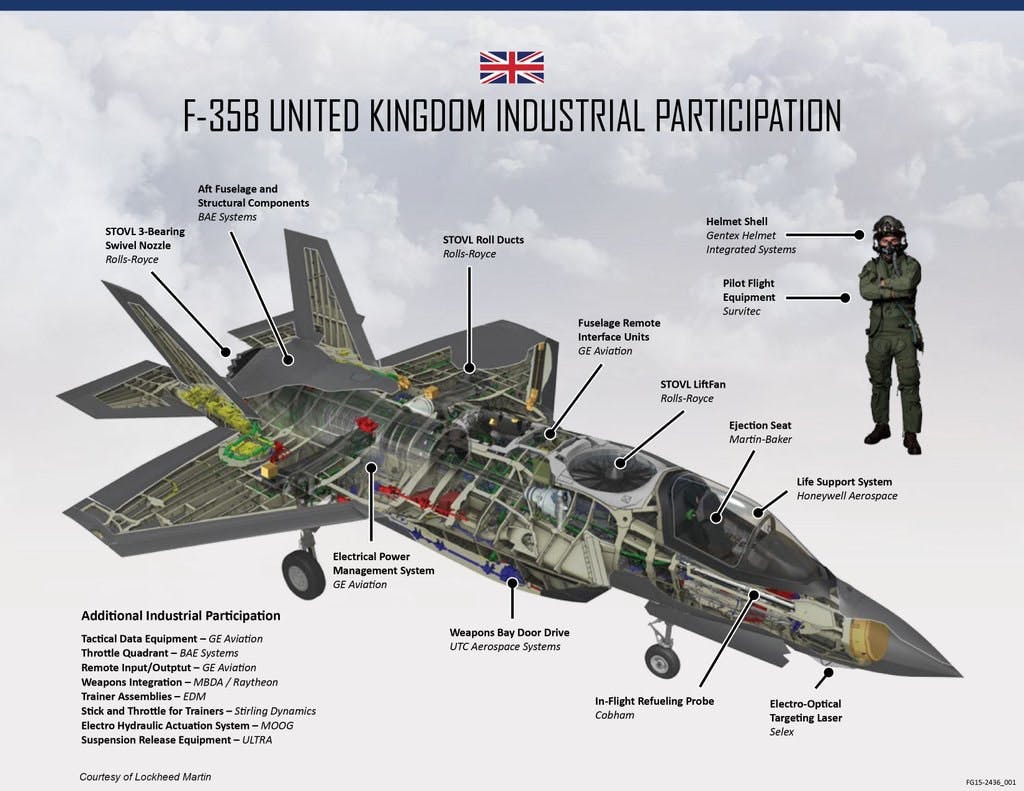
Thus the 138 airframes were calculated as the number required to support an operational force of 6 sqns plus an OCU (larger sqn size equivalent) through life – likely to be based at 2 locations but still to be within a single new UK Joint Lightning Force (UK JLF). In 2005 the MoD committed to the JCA solution being the F35B STOVL variant which also then underpinned the STOVL design and configuration of the Queen Elizabeth (QE) CVF carrier class about to go to build contract in 2007 – both decisions being fully inter-related and integrated.

In UK defence matters of course, particularly in the last 25 years, amendments to procurement and force level plans have become an unpalatable feature as unforecast financial constraints and crisis intervened to cause cancellations, reductions or amended plans. It was not helped too as major conflict involvement required greater in year defence expenditure, and key and very expensive projects such as the F35 and QE carrier programmes doubled in price for various reasons mostly beyond the UK MoD’s control.
In reality the first step back from requiring the originally envisaged 138 F35s happened in 2006 when money simply wasn’t available to buy replacements or fundamentally upgrade the FAA’s Sea Harrier FA2 fleet to meet essential performance requirements especially in hotter climates and that very capable AMRAAM equipped naval fighter was withdrawn prematurely with many airframes less than 15 years old.
This of course removed 2 sqns and although compensated for to some extent by the creation and use of a common fleet of offensive support GR9 Harriers within the remaining reorganised JFH sqns the reality was now that the requirement for 138 F35Bs looked unsupportable and unsustainable in practical and financial terms within the forecast procurement budgets available out to 2015 at that time.
This was further complicated at the same time as it was becoming clear that F35 project development timescales and costs were getting out of hand and questions were being asked at all relevant UK Government, MoD and industrial levels of just how many F35Bs the UK could ultimately afford.
A question still not yet answered.
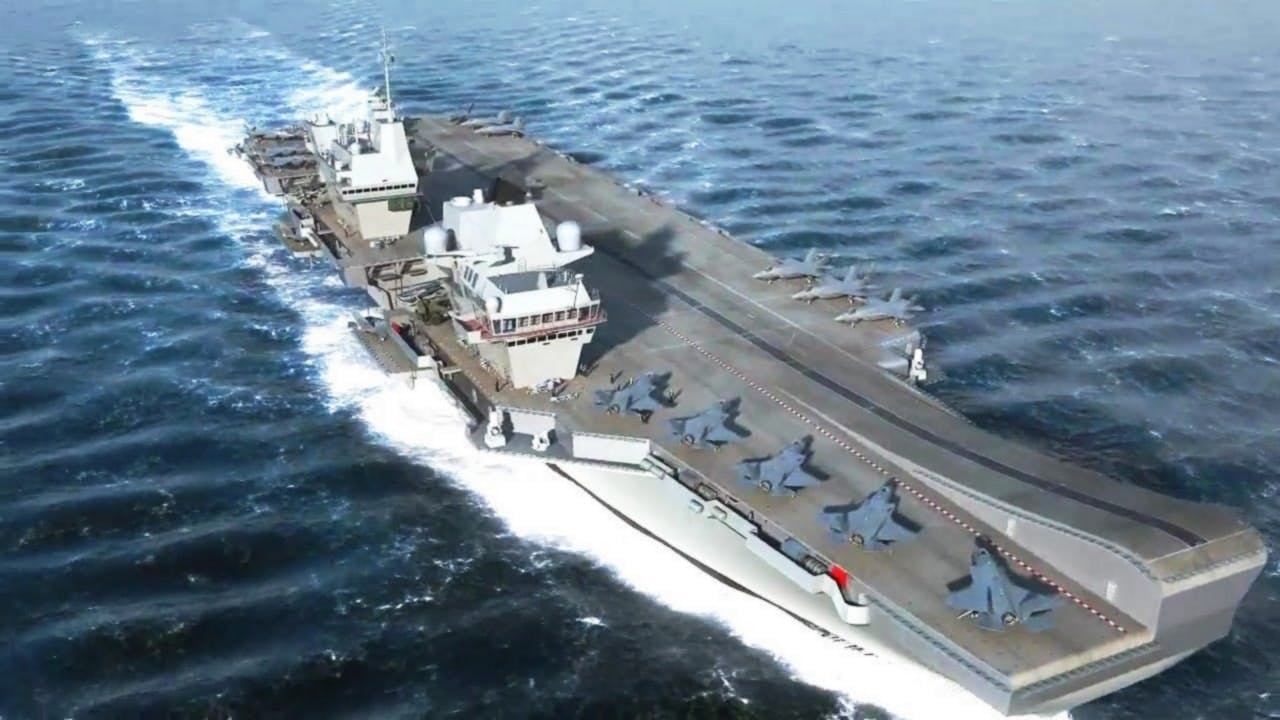
The 2010 Strategic Defence and Security Review onwards
The major change then occurred of course during SDSR2010 called by the new UK Coalition Government and with a clear remit to reduce UK national debt, meaning slashing the forecast MoD procurement budget by 30% to remove an unfunded black hole that already existed in the 10 year DE&S plan, and also the annual in-year operational defence funding by at least 7%.
After much MoD staffwork juggling and some very unpalatable decisions to restructure combat air capabilities to meet not only the immediate financial constraints but also ensure enough money was left to fund F35B and QE carrier development and purchase for the future, the (heart-breaking for many) decision was made to scrap the JFH Harrier GR9 Fleet and the remaining active RN CVS strike carrier 5 years earlier than previously planned.
Taking a “capability holiday” for the sake of a much improved future QE carrier and JCA/F35 capability was deemed the only affordable plan. This also led to a fundamental MoD reappraisal of which variant of the F35 was now needed to meet the carrier force level capability required within the new more restricted money available.
Simultaneously the RAF of course saw not only the withdrawal of the Tornado GR4 force brought forwarded to 2018 from 2025 but in effect a halving of its combat aircraft sqn numbers underpinned by an arbitrary halving of its aircraft readiness commitment to NATO. This latter aspect is not often fully appreciated by outside observers or those who focus on RN ship, FAA and QE carrier matters and the force level issues associated with those capabilities.
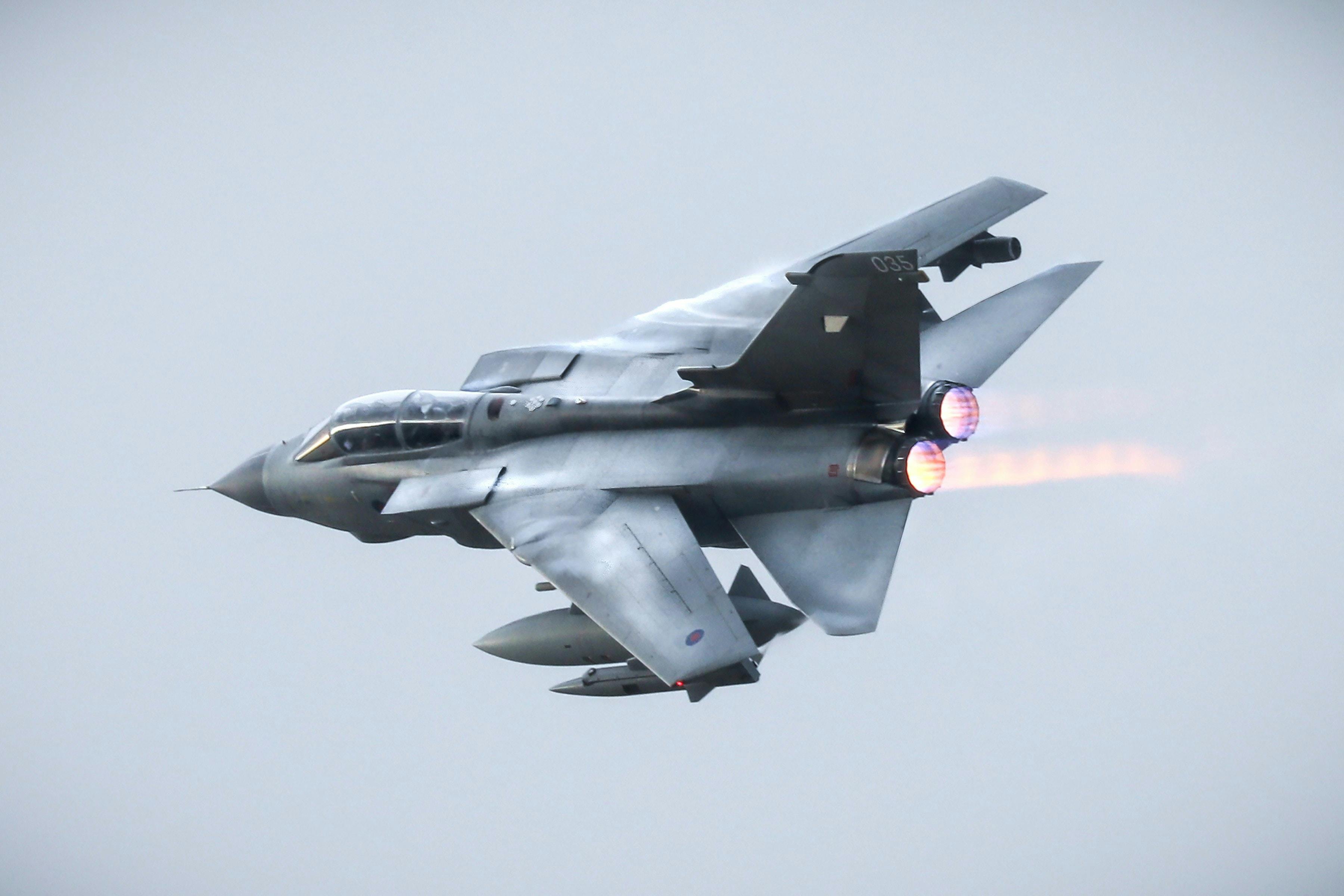
In effect the future of the UK manned combat aircraft capability out to at least 2040 for the RAF (and FAA) was to be vested in just two types – upgraded swing role Typhoon, and whatever variant(s) of F35 were finally confirmed as required.
More significant in many ways than the early demise of the JFH, the programme to replace Tornado GR4 from 2025 with a mix of UCAV and manned stealth aircraft (FOAS – Future Offensive Air Systems) had been cancelled too – and this is highly relevant later in this analysis. The RN too realised it could now only afford to complete the buy of and operate one QE class carrier with the PoW being the one reconfigured to come into service and the QE mothballed or sold.
The SDSR2010 outcome on the UK F35 purchase programme was a definitive and real reduction from the original 138 aircraft requirement of F35Bs to around 35 F35Cs for the one and only revised and catapult equipped RN QE class carrier, but as yet an indeterminate number of F35Bs for the RAF.
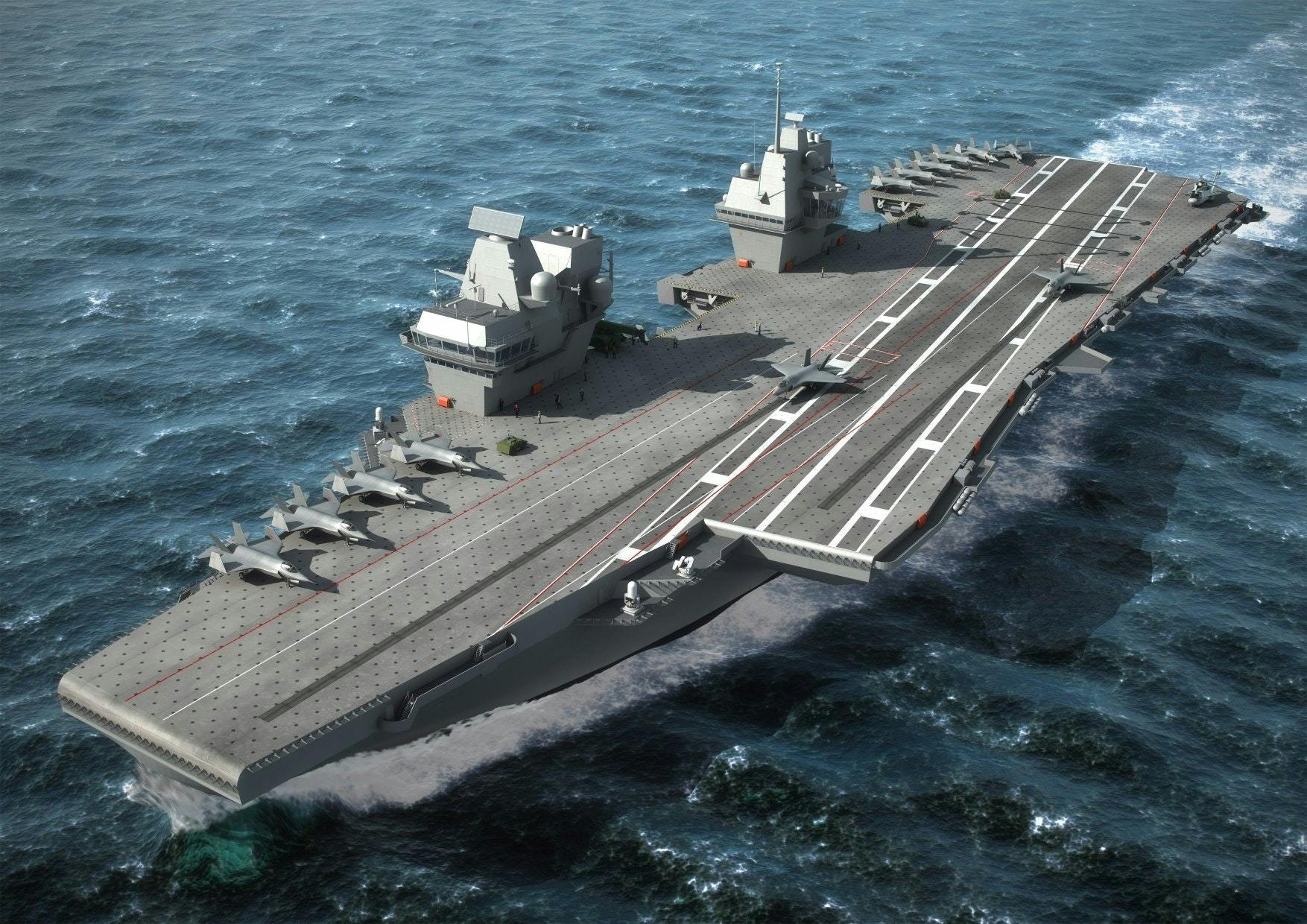
Fortunately, or otherwise by 2012 the SDSR2010 proposal to save money by using only 1 catapult reconfigured carrier for launch of F35Cs was abandoned after costs of the catapult modifications proved far more expensive than originally understood in 2010, and it became clear also that F35C would not enter operational service with the UK earlier than 2025.

With no additional budget available the F35B and STOVL carrier design returned, along with any future in-year money saved underpinning the future availability of both QE carriers for service given both were already contracted to be built to that configuration. Out of that ultimately came the policy of one active carrier with a minimum of 12 F35B aboard and a new normal compliment for major ops of 24 (ie. 2 sqns).
Hence out of SDSRs 2010 and later endorsed in 2015 came a revised plan for a minimum of 48 F35Bs to provide exactly that – 2 op sqn plus a training unit) capability by 2025. A very different policy to that envisaged in 2005 for 138 F35B and 6+1 sqns to be delivered by 2020.
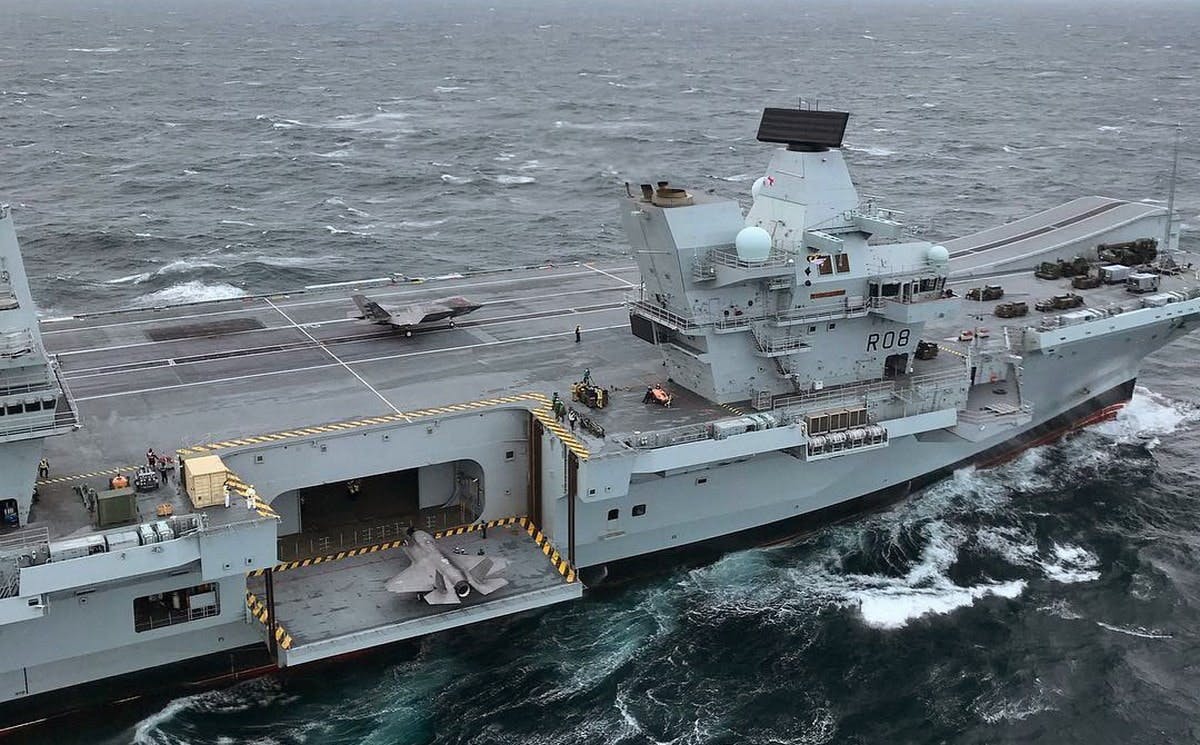
Of course, the QE class had been designed in detail specifically to routinely operate in full strike carrier configuration with some 36 F35Bs and relevant numbers of Merlin ASW and ASAC helicopters so there was always going to be MoD staff aspirations to increase overall fleet numbers beyond 48 at some point to ensure this was possible. Bear in mind too that the JCA and hence the F35B was still being purchased to replace the RAF’s Harrier expeditionary capability from minimalist land bases. The UK F35B purchase has never just been about having aircraft to purely operate from carriers.
Furthermore as a result of SDSR2010 the F35B purchase was increasingly seen as its capabilities were confirmed through testing as the only affordable way in the shorter term to replace the all weather precision attack capabilities the Tornado GR4 with a modern stealth and network enabled aircraft notwithstanding the Typhoon force was also to be upgraded too to ensure as much offensive air capability within a much reduced RAF combat air fleet overall.
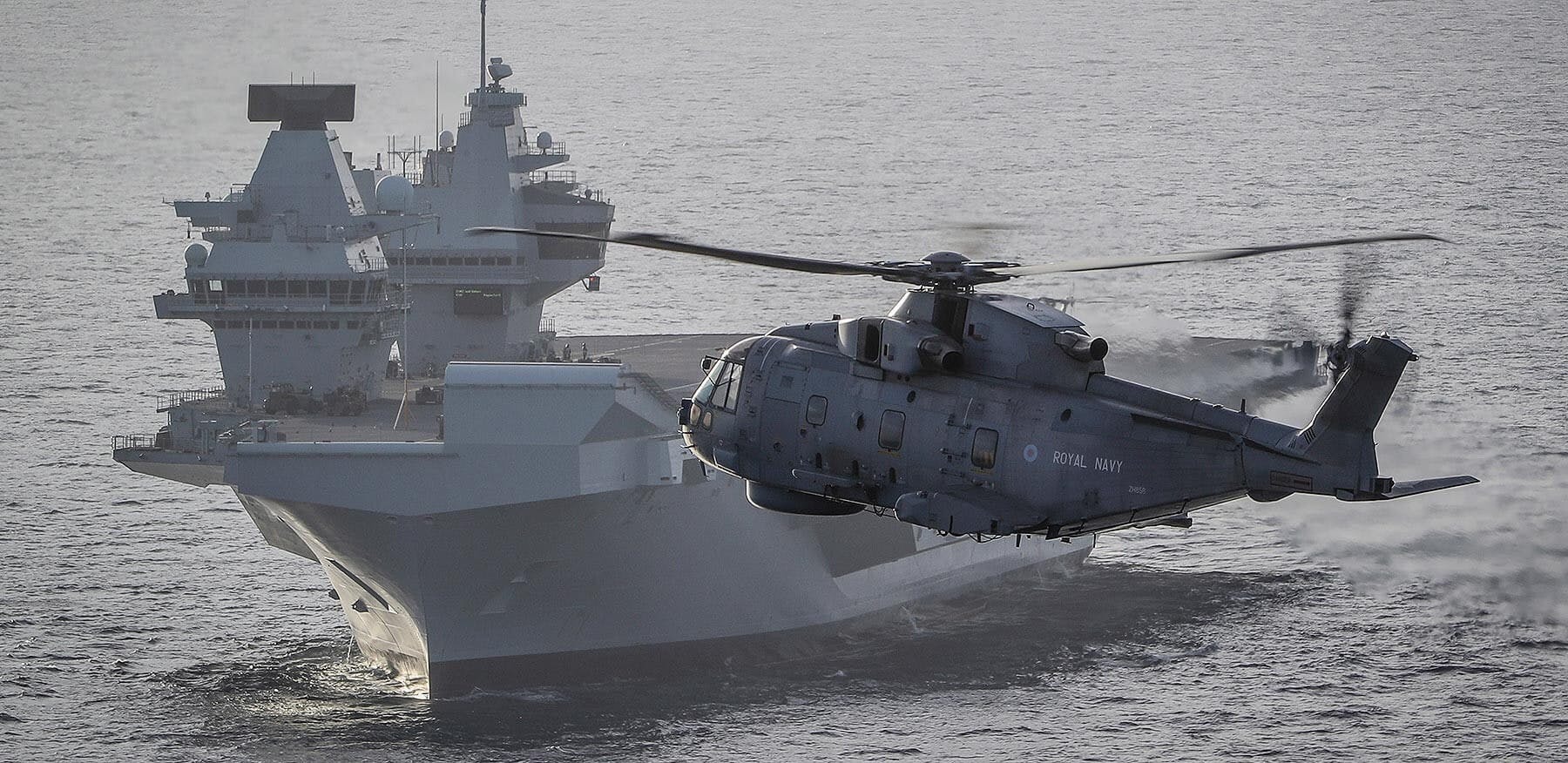
This latter driver is important to grasp as now not only does the RAF’s operational credibility depend on joint operation of the F35B as originally envisaged as a Harrier replacement but also its hitherto longer range airfield based capacity provided by Tornado – something not contemplated in the more optimistic pre-2010 RAF days of FOAS arriving after 2025 to replace Tornado. This added even greater emphasis on RAF involvement in F35B than necessarily envisaged in 2005.
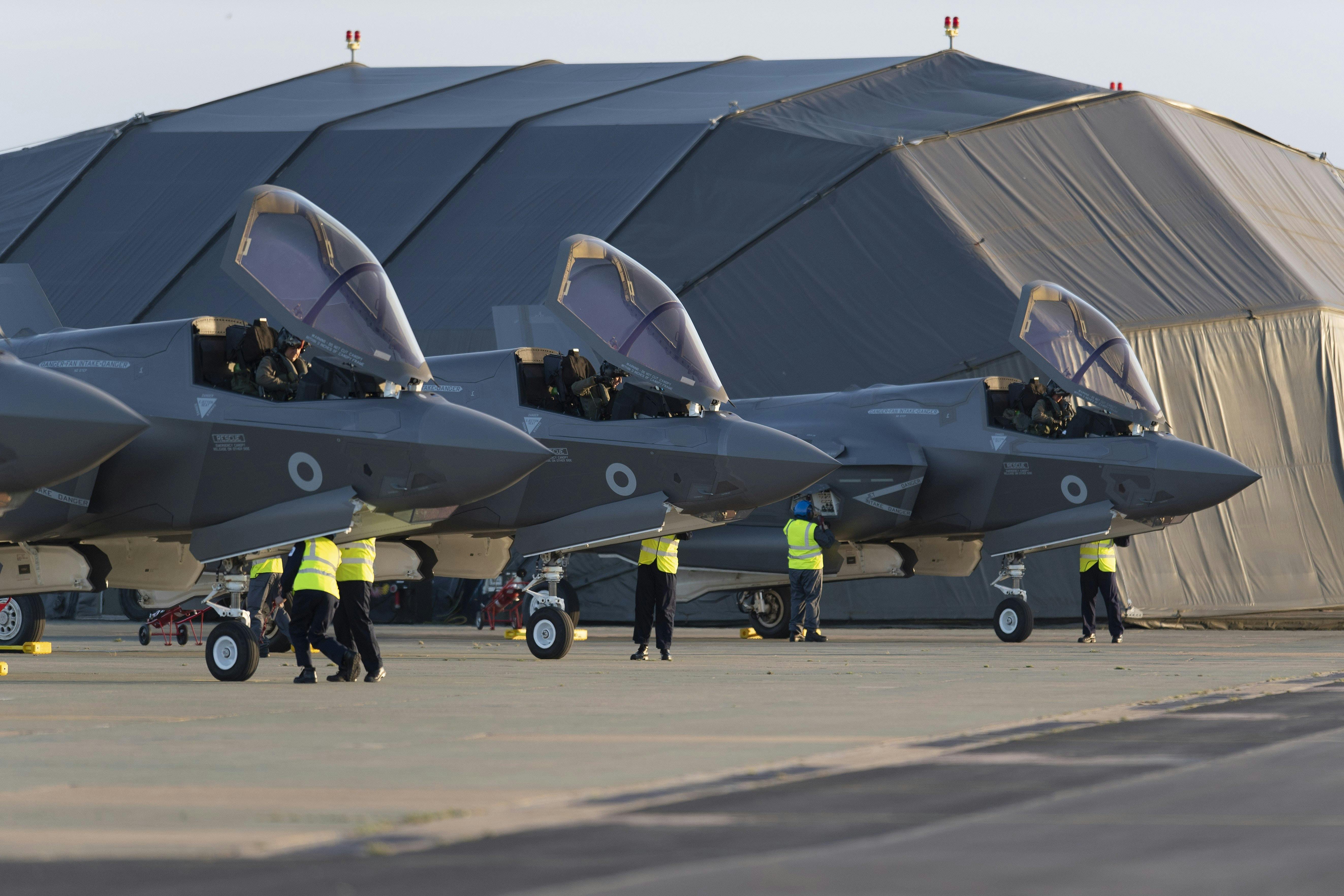
Those sceptics who sometimes question the RAF’s commitment to F35B need to understand this significant driver as even with a likely 4 F35B op sqns available by the early 2030s, these represent 40% of the UK and the RAF’s combat air capability – not something the RAF would wish to lose or not be part of in any circumstance. Both the RAF and FAA therefore have a fully vested interest in seeing a successful joint F35B force (UK JLF) be it from the QE class carriers or expeditionary land bases, and both are fully committed to it.

Fleet size and availability
As indicated above, it emerged from SDSR2015 and the more optimistic financial plan therein that the UK JLF equipped with F35B would develop gradually and when affordable into a 4 op sqns plus one suitably sized OCU sqn force.
This in theory allowed for up to 3 sqns to be carrier deployed in extremis when required, with one or two still being the norm. A minimum of one would then be available always for a land expeditionary deployment or any permutation between the one active carrier and land deployment depending on the actual operational demand at any given time.
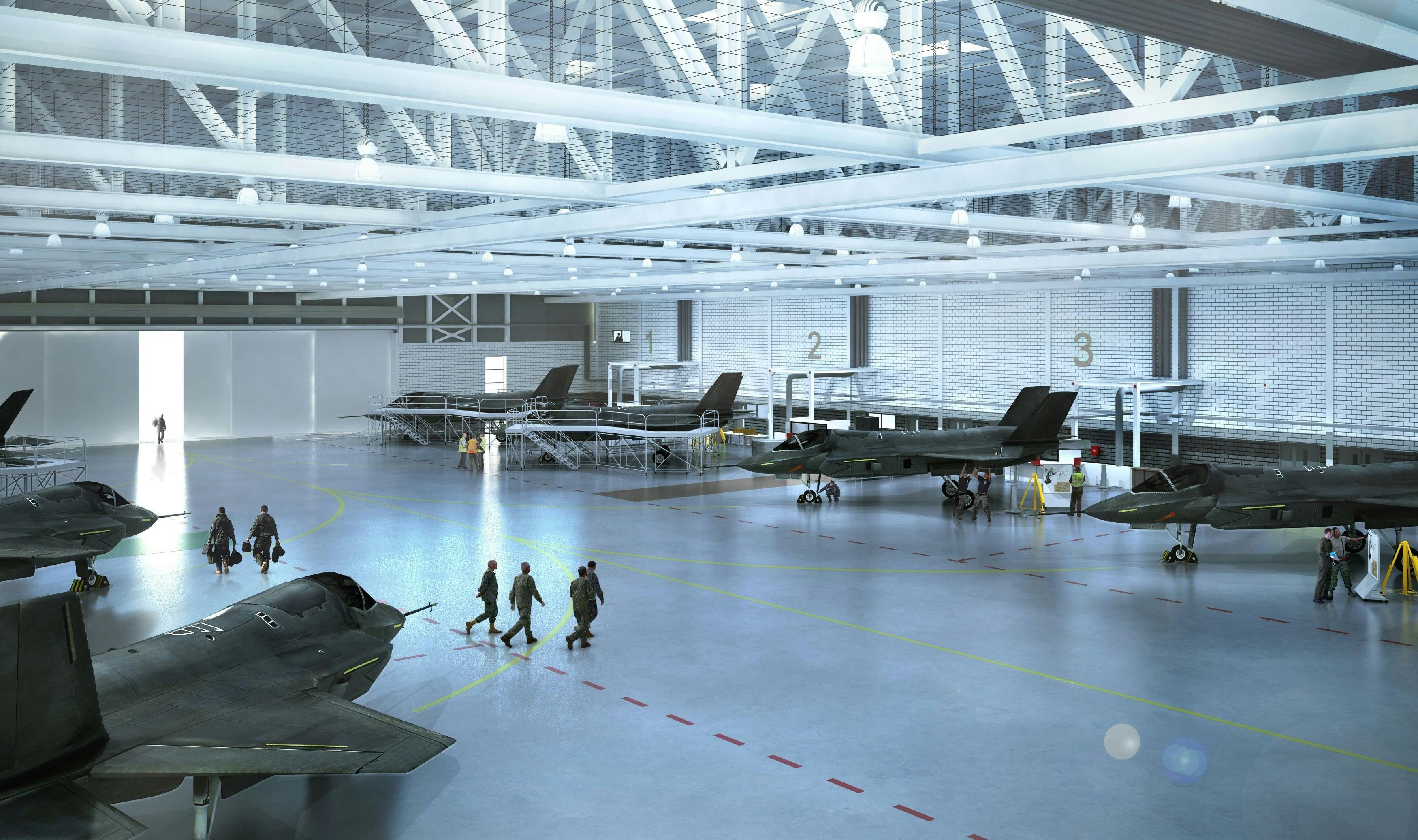
What all that meant of course was no abiding requirement for 138 F35B aircraft – 4 sqns of 12 active ac each along with a similarly sized OCU means 60 active ac on the front line. Add 50% more airframes (a common fleet type planning assumption) for deep servicing fleet planning and attrition storage and that makes 90 not 138. Even 90 may well be an over requirement in the shorter term in these days of much lower routine attrition and more rapid deep service turnarounds increasing fleet numbers availability, Indeed the RAF is trying to generate 7 + 1 OCU Sqns from 150 Typhoons at present – a clear indicator of the beneficial front line airframe availability within modern combat aircraft fleet management. Someone might argue therefore that 80 or so F35Bs are all that is needed to sustain 4 ops sqns and an OCU of 60 active aircraft.
This is reinforced when the F35 production programme is destined to continue until at least 2050 (“the life of the programme”) when regular top up buys will be possible at the time needed rather than spend money early for too many airframes to be stored and unused for many a year as was the practice in the Cold War era.
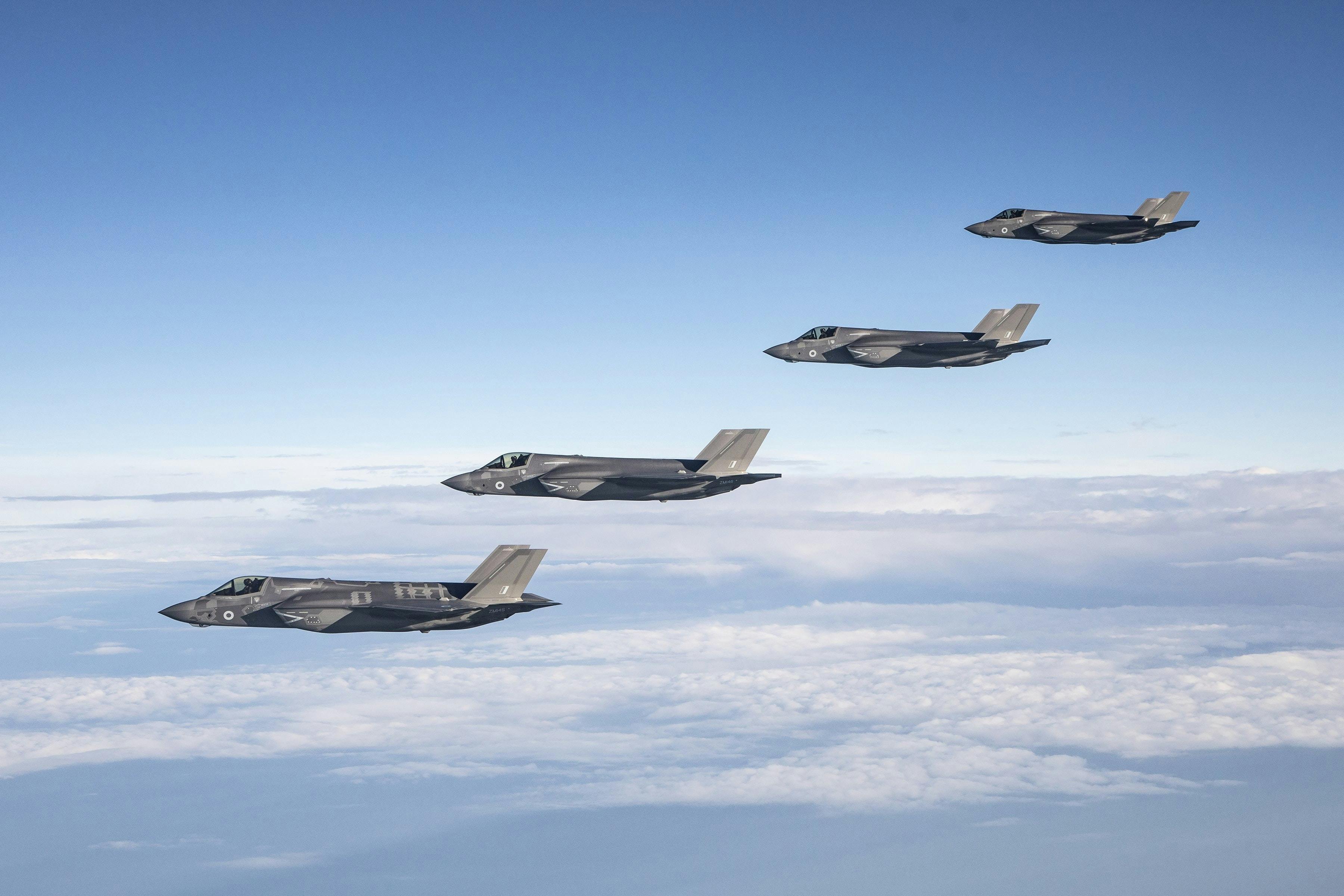
The price tag
At £100M an F35B unnecessary surplus purchase is just not a wise investment further reinforced by the spiral capability development policy behind the F35 meaning it’s often wise to invest in the upgraded version later and minimise expense upgrade costs.
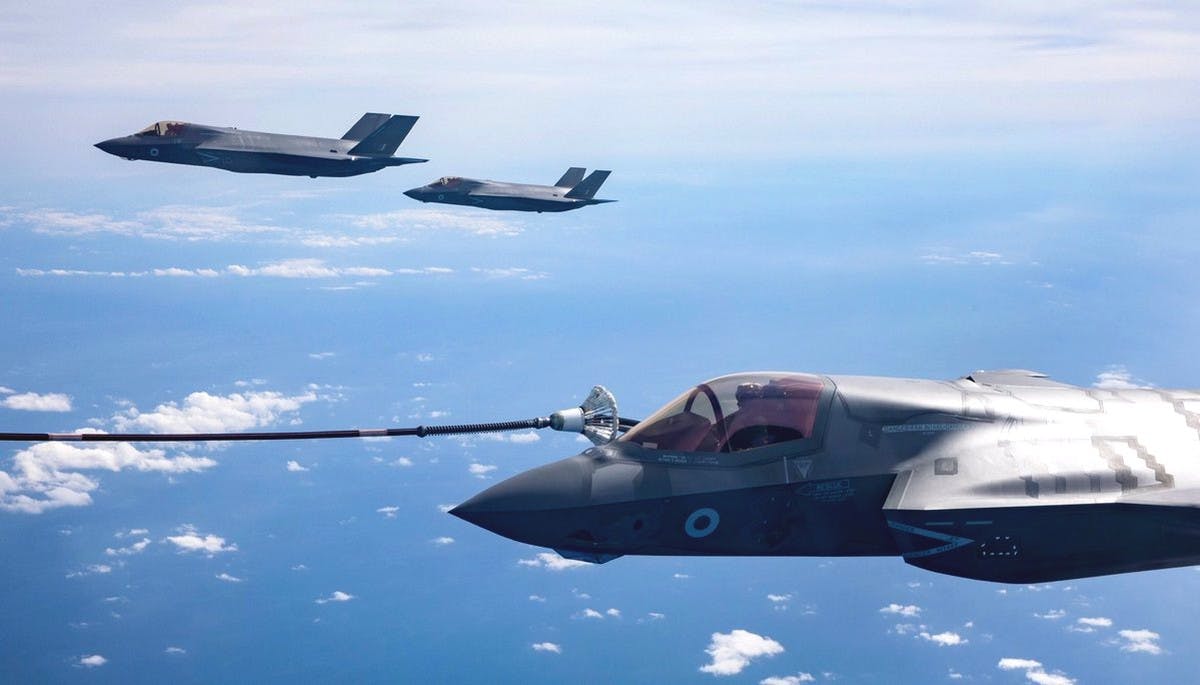
So in reality 138 F35Bs to sustain the planned UK JLF F35B force level is simply too many – no surprise given that figure was as mentioned supposed to sustain the 2005 plans for 6+1 sqn level units (90 front line aircraft).
In the severe SDSR2010 financial planning environment any reductions in planned numbers were seen as essential – certainly out to 2020 – but less so now in the post SDSR2015 procurement budget period where the SDSR2010 decision to only have 18 F35B initially out to 2020 has now been revised and the 2nd op sqn (809 NAS) fully funded from a 35 ac fleet by 2023.
Furthermore, it’s now well recognised that peer on peer conflict threats are increasing and the beneficial realities of having stealth and networking aircraft capabilities aligned with a fully equipped aircraft carrier too are now writ large in UK defence planning as opposed to being seen as future capabilities.
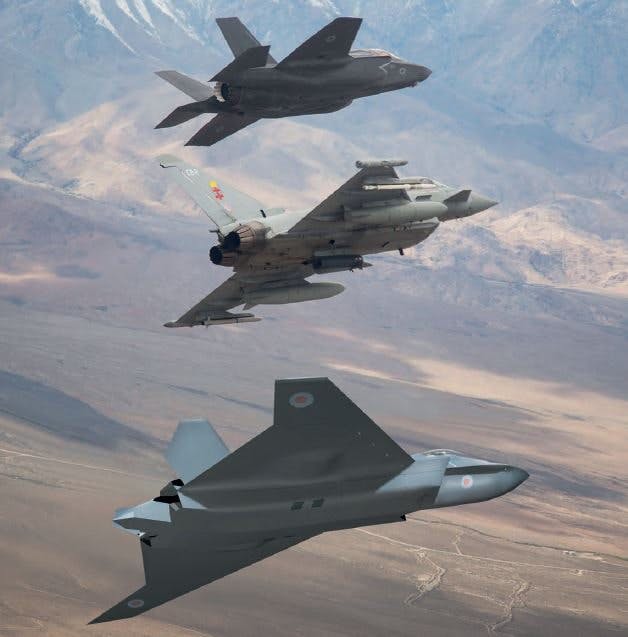
The plan going forward
It may yet not be endorsed and funded policy but behind the scenes, ensuring the one active QE class carrier can deploy with 3 F35B sqns is high on the agenda. The US/UK agreement to use 1 USMC F35B sqn off the QE class cleverly underpins this, and in reality means that by 2023 such a 36 F35B force on board will be achievable to ensure full air wing carrier crew integration trials and training and if operationally required on a specific UK CSG deployment given there will be 2 UK op sqns (617 & 809) by then too.
When a 3rd UK sqn might be available to substitute for the USMC unit is another question, with yet no official procurement plan announced to make that happen as yet. However, it is anticipated such a plan will emerge later in 2020 and certainly by the next SDSR. That said, the integrated use of a USMC F35B sqn has valuable allied political, operational, training and UK F35B fleet management benefits and may well become the norm for decades to come.

It’s perhaps worth saying at this point that any wider enthusiasm or aspiration to be able to consistently operate both QE carriers in strike configuration will of course take a much greater investment both in more F35Bs and indeed the supporting ASW and ASAC helicopters. The low numbers and availability of the latter being an equally constraining factor on 2 fully equipped active UK strike carriers as would be F35B sqns availability.
The additional cost in provisioning such is immense and way beyond UK, RAF and RN budget limits as presently planned. It would take a major change in UK defence policy and increased defence expenditure to implement such a “two active strike carrier” capability on a regular basis especially when there is much to do elsewhere in the 3 services after many years of low funding. Of course, 2 carriers would not be available all the time either given regular maintenance down time requirements.
Keeping the present policy to use the 2nd carrier as a relief replacement for the first or as a concurrent LPH if needed is a cost-effective solution within the budget and wider UK aircraft availability constraints.
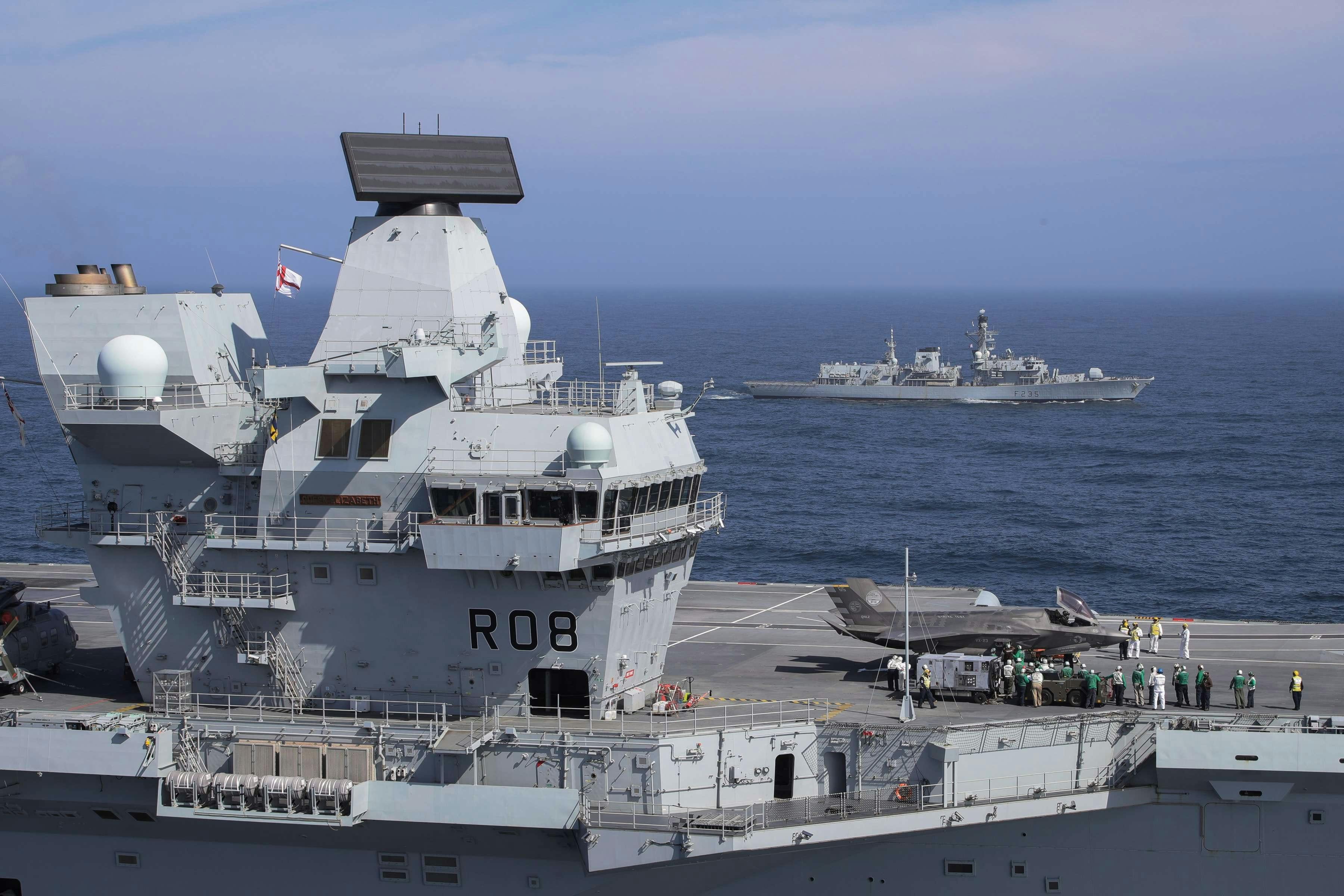
So why is HMG and the MoD still focused on saying we will buy 138?
Well in short, its down to political and top level intergovernmental programme commitments made in 2005 to buy those 138 that also provided (along with £2Bn of UK R&D funding) the leverage to make us a Tier One programme partner with all the programme integration and industrial benefits associated with that.
The positive impact on UK industry of our Tier One status is financially massive as well as keeping the UK up there with 5th gen combat ac technology for decades to come.
At the time we were the biggest by some margin non-US customer for the F35 too.
During SDSR2015 it soon became apparent to HMG and the UK MoD that the US would not take kindly to a reduced UK F35 purchase plan too. Given the original procurement plan was to buy all 138 by 2020, the new politically dictated compromise of “138 through the life of the programme” is at this new stage as much of a ‘saving face’ aspiration as it is a genuine holding position until the real level of procurement and its timing beyond the first UK tranche of 48 F35Bs by 2025 is decided and approved by the UK MoD, HMG and the HM Treasury.
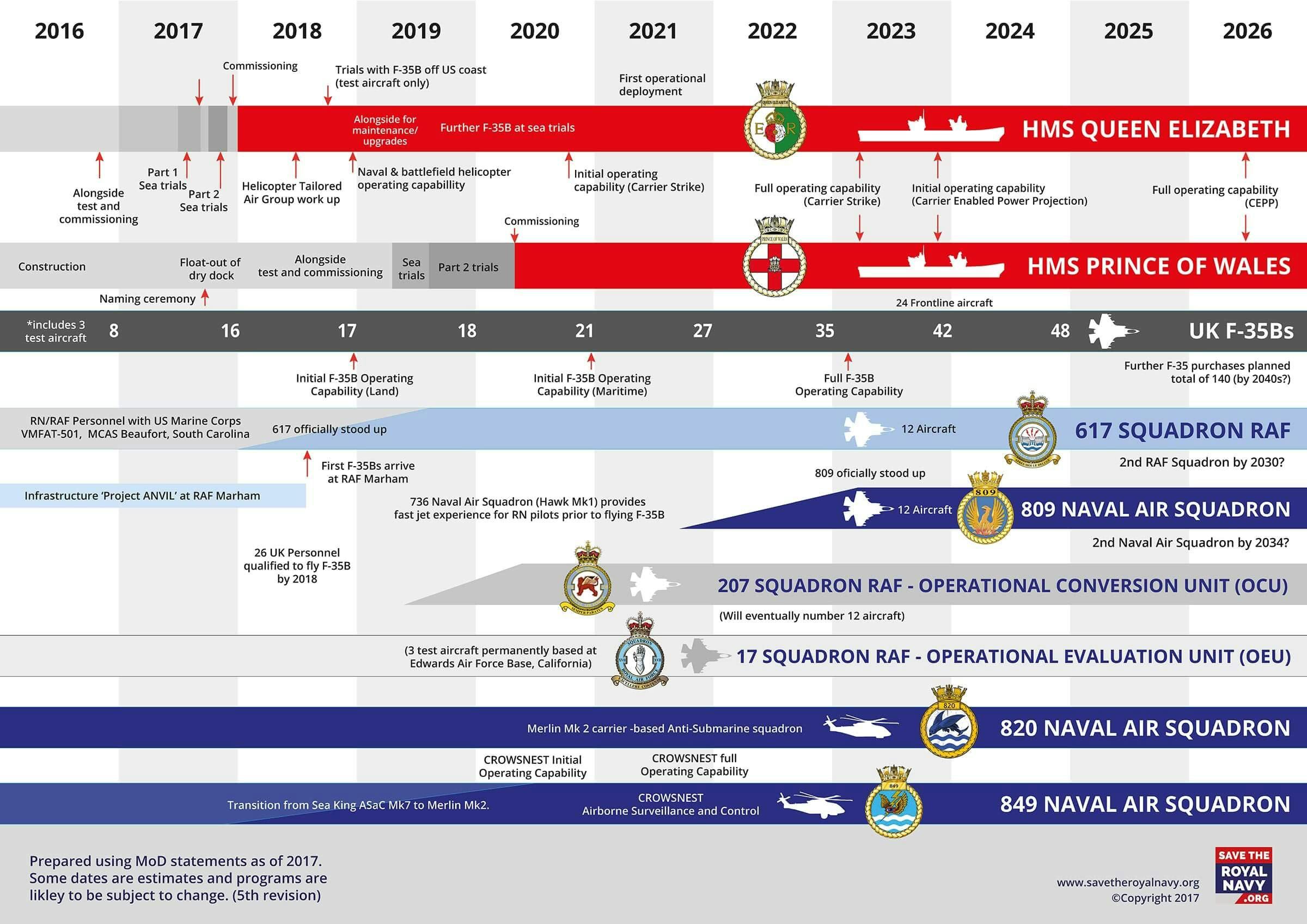
Deciding how many additional F35Bs we need as discussed above beyond the 48 so far funded is now the key initial and imminent question to underpin everything.
This now also has to be set alongside how many additional F35s and of what variant the RAF intends to buy to meet its commitments for stealthy and high performance expeditionary defensive counter-air and attack ops as originally envisaged in the FOAS and Tornado replacement programme.
This has further impetus too now as SDSR2015 funded the retention of the 30 or so Tranche 1 Typhoon F3s to partly compensate for the early removal of Tornado but which are not capable of upgrade to full FGR4/5 standard and must be retired by 2030. Given the RAF’s earlier FOAS requirements wherein a proportion of that then separate procurement was touted at the time to be F35A in 2025 – then the stage is set for some of the 138 UK F35 commitment now being translated into such an F35A purchase alongside the finally agreed number of JLF F35Bs required.
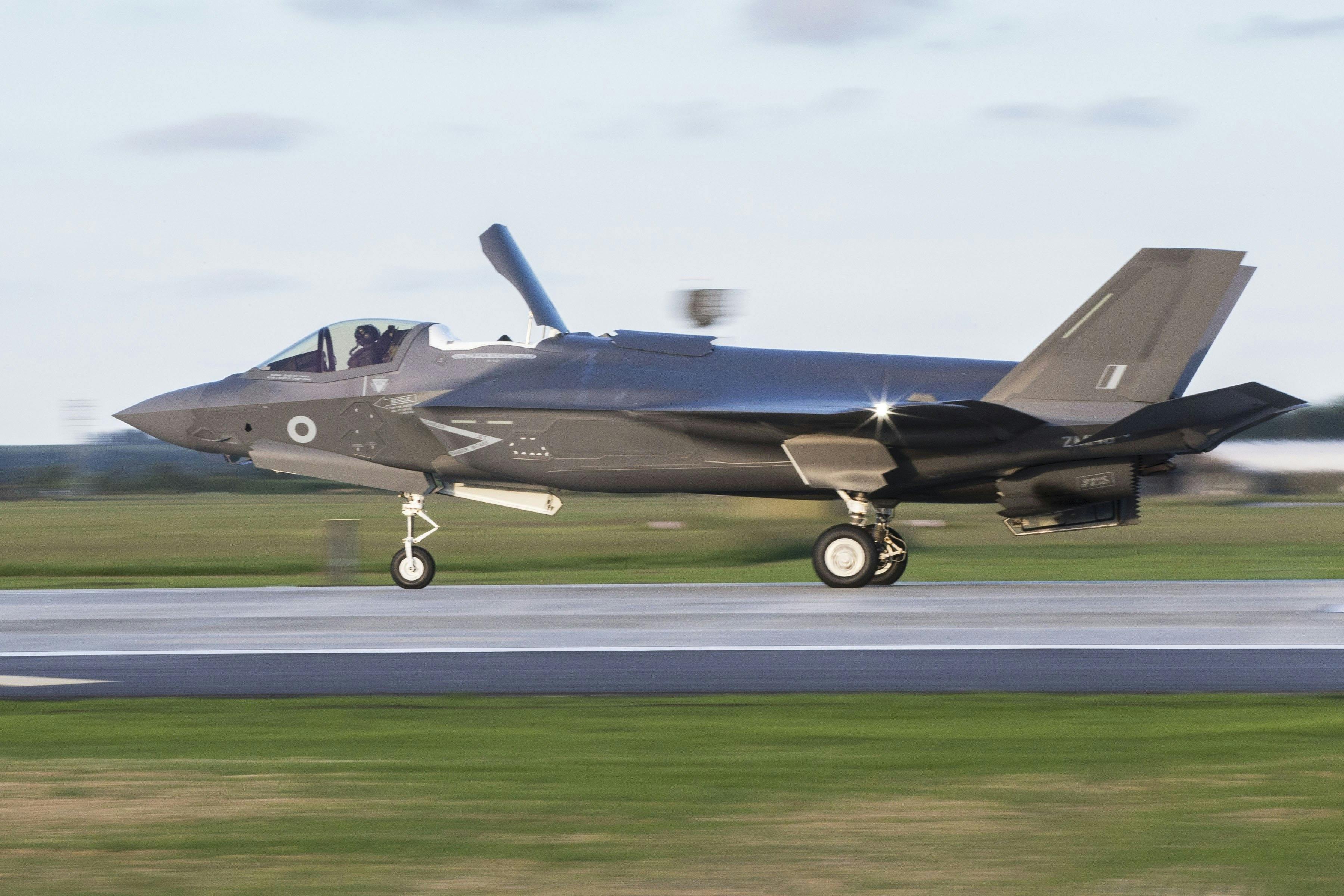
Given the UK’s extant one op carrier policy that means this could be achieved within the 138 “through the life of the programme” F35 procurement strategy and commitment. This also implies a likely commitment to buy about 40 F35A by 2030 to replace those 2 Tranche 1 Typhoon sqns alongside the required F35B buy now to provide additional airframes for long term support of 4 +1(OCU) JLF Sqns for use on the active QE carrier and other land based tactical deployments.
That all said it is still possible the Tranche 1 Typhoon replacement could still in theory be done by buying 40 F35B to replace the Tranche 1 Typhoons albeit with lesser capabilities in range, internal weapons capacity (including types) and sustained air combat manoeuvrability than the RAF believes it needs in these wider roles. In essence, such a decision will swing on not only the operational value of the F35A additional capabilities but also whether any additional costs or indeed savings make a sub fleet of F35As affordable over its planned life.
Should such a buy happen, its possible that the RAF F35As may collocate with their USAF equivalents at RAF Lakenheath to save costs too.
For sure be it an all F35B purchase ultimately or a mix of A & Bs, the overall final purchase number will also be influenced by emerging force level and type balance considerations for Tempest procurement post 2035 – the main 6th generation replacement for the later Typhoon Tranche 2 & 3 variants.

Conclusion
In conclusion given the above, it’s then manifest that with a likely active F35B fleet topping off at around 90 through life, and an F35A buy of around 40 this does indeed still imply a UK requirement to buy around 138 F35s “over the life of the programme” out to 2040 or later.
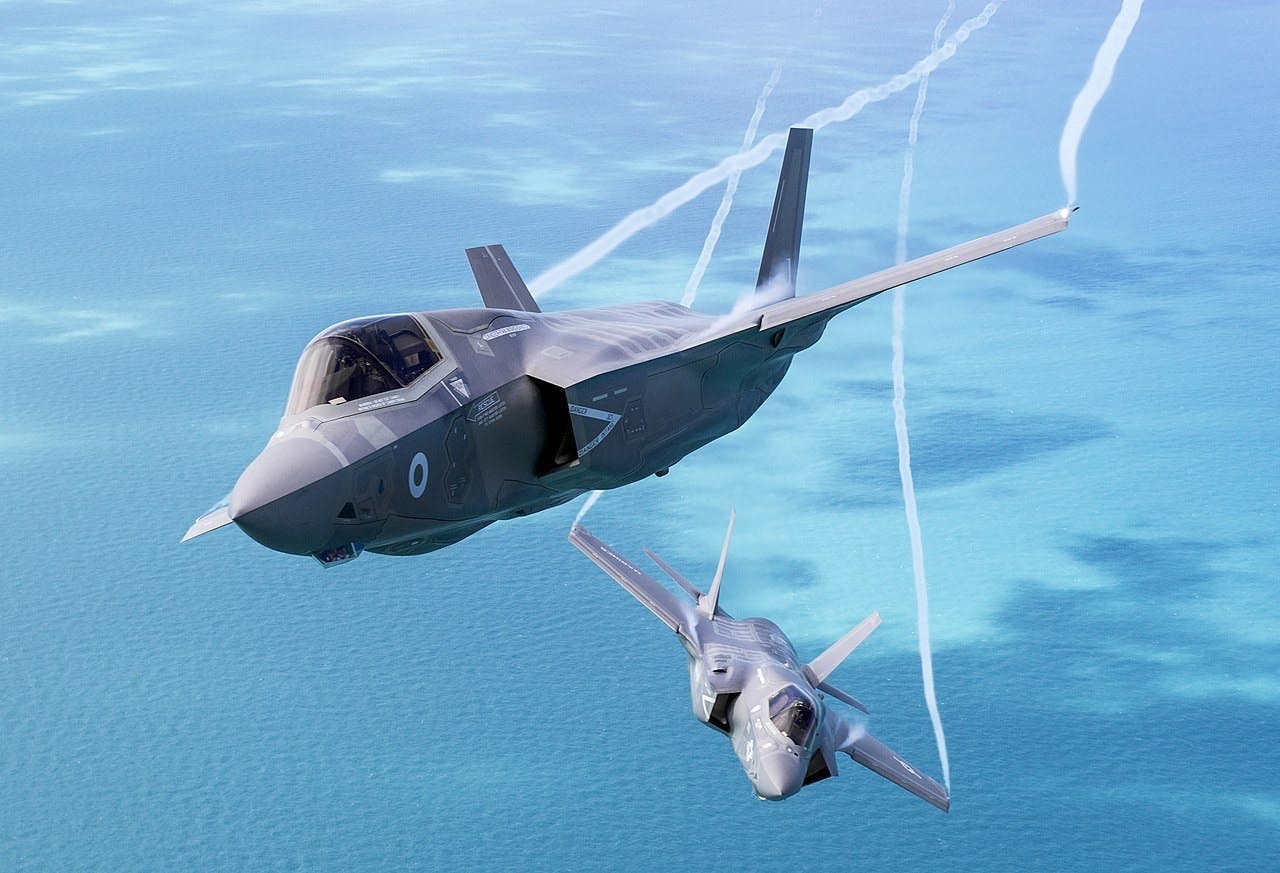
It’s certainly a logical option within the commitment made and to provide the UK with the affordable and more tailored combat aircraft fleet that the MoD has been considering for some time and now needing to make some critical decisions given the lead times involved.
The further flexibility of the situation being that if emerging threats and increased budgets demand greater investment then ultimately the UK could buy more then 138 of the present or future upgraded F35 design.
Tempest in whatever manned guise it ultimately emerges by 2035 may affect this final UK F35 purchase number too. Of course, if Tempest never emerges then F35 and its future variants may also offer an alternative to replace Typhoon from 2035.
Most significantly if the UK commits to purchase and support an available F35B fleet of between 80-90 airframes then it will be able to operate one active strike carrier at any time with a 36 F35B strike air wing of 3 sqns and associated ASW and ASAC helicopter units – one active strike carrier being the only funded and approved policy at present.
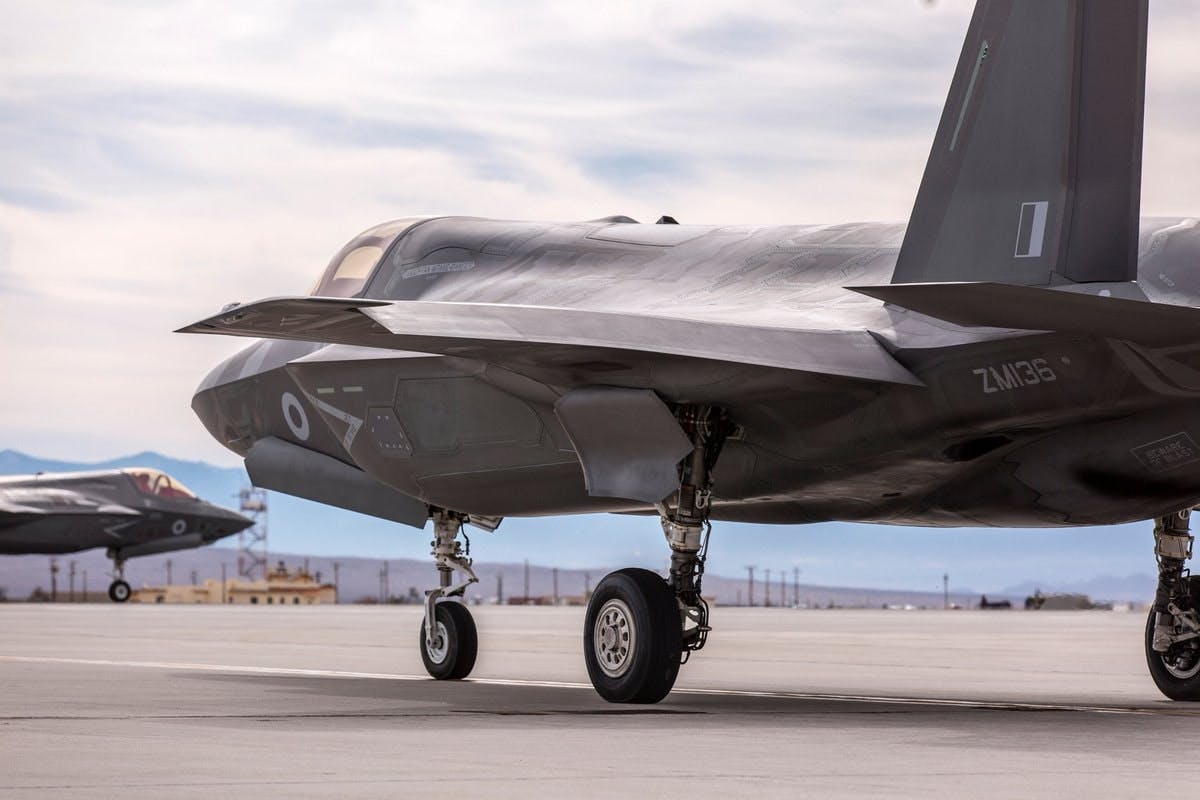
None of this will be anything but expensive given the 48 Tranche 1 F35Bs are already budgeted at over £9.5Bn for both procurement and a 10 year support programme. Those 2 additional JLF B and 2 RAF A sqns as discussed above are going to cost around £20Bn for procurement and support for the first 10 years of their use – a very large sum indeed.
Let us all hope future UK governments will fully fund such a 138 F35 commitment as regularly stated in recent years – for both the RAF, FAA and UK combat air power credibility would suffer significantly if not.
About The Author
David Simpson served for over 25 years as an RAF pilot, in executive flying appointments and as a senior staff officer including MoD Operational Requirements and Capability Management. In addition to his front line flying he qualified via ETPS Boscombe Down as an experimental test pilot in 1987 and went on to command Experimental Flying Squadron at the Royal Aircraft Establishment Farnborough in 1989. Operationally David was involved in the Falklands, Bosnia and Gulf war conflicts and has operated helicopters off carriers and smaller vessels for both test and operational reasons. His final appointment in the RAF before his early retirement into the aerospace industry in 2005 was as the UK MoD Director of (Test) Flying for the Defence Equipment & Supply organisation based at Abbey Wood within which he was responsible for the regulation and approval of all UK test and development flying and plans (including the F35) wherever it took place under MoD Project team management across all MoD and related industry airfields.
The D Flying appointment was also Head of Profession for all qualified UK experimental test pilots. Following executive and project management time with Lockheed UK and Babcock Defence, he was more recently COO for British International Helicopters where he also managed the first of type introduction of AW189 helicopter in the demanding Falkland Islands all-weather SAR role. Currently he is a board member of Lease Corporation International, and FlyPlymouth looking to reopen Plymouth airport and develop it further for modern aerospace activity and employment. He has had an abiding interest and affection for UK aircraft carrier operations since 1965.



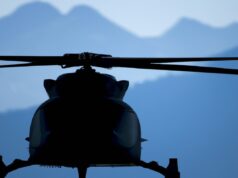

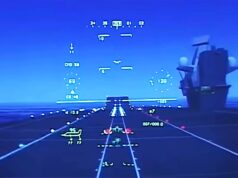
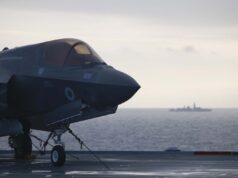

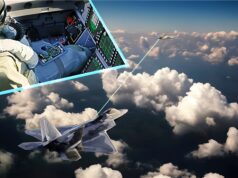
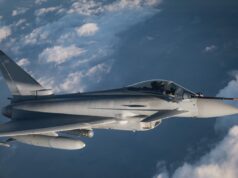

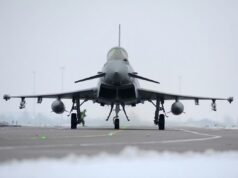
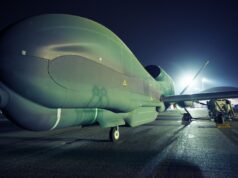

Great paper that IMHO provides a realistic and balanced assessment of the situation and options for the future F35 force development.
Thanks
Yes .. balanced and realistic. It highlights the increasingly complex and expensive nature of defence procurement…
Unfortunately what underpins it all is a regularly underperforming tax base. It strikes me that too much tax (the money we need to fund our defence and the rest of our nation) slips through the net. By that I mean at one lower level, “expense accounts” and on a higher level, the lack of tax paid by the likes of Amazon.
Best article I have read here in years.
Sums it up perfectly. Thank you.
With Boris now PM who has said that he wants to spend more, maybe this and a few more ships might be on the cards.
edit: and awesome paper, thank you!
One point to note is the success on F35B in export market, japan now and potentially South Korea are already interested and several other nations may follow suit, this can keep F35B in production without the UK taking all 138 in B configuration. Tempest is probably a pipe dream and ultimately the RAF will probably end up with a mixed fleet for F35B and probably E and a mix of UACVS both high and Low end.
What’s the F35E?
Probably a future version of F35 A with adaptive engine technology that will enter service late 2020’s.
Would that not logically be the F-35D? Regardless, given the current model layout of A,B, and C, I’d expect them to remain designated as such throughout their lives, just with ever improving blocks.
Well that was informative, get that man a Cigar ?
Top notch article, thank you for your time and expertise
The MOD recently announced the LANCA project, otherwise known as Mosquito , to produce a lightweight ‘loyal wingman’ uav , to increase the mass of the offensive air power. It’ll be interesting to see if any provision is made to make this aircraft carrier compatible.
Seems doubtful, none of the concepts are STOVL
Isn’t the 138 as much about maintaining our percentage of the whole build program as the well presented points in this article.At 15% by value its a big money earner for UK plc.Personally I think we will buy new aircraft to replace older planes as more and more upgrades make updating them very costly,these older aircraft will end up as spares donors much like the 2 seat Typhoons have.
Small point-is it 15% by value or content? I should imagine it is the former as content would be difficult to define exactly(or am I being doff-although I can see that a 50:50 mix for e.g. in terms of content might not have equal values both sides or am I just muttering on..old age!)
It value as content is hard to define.
It’s value of the programme as content depends on which variant is ordered.
The key thing to note is that this is NOT 15% spent in the UK. It’s 15% with UK companies. That includes the BAE Systems EW system that is made in the US and the Rolls Royce LiftSystem for F-35B that is made in the US.
If 7.5% is spent in the UK I’d be surprised.
The 15% is PR Bull….
The lift fan is now built in Bristol at a new facility,BAE indeed are supplying content from a number of countries but UK is supplying all rear fuselage most of the vertical and horizontal tails a lot of the software,Martin Baker supply all the ejection seats,RR supply all parts related to the B Model engine,plus many other smaller elements supplied by GKN,Leonardo etc so quite a lot of British content in the value chain.
There’s got to be something fundamentally wrong if new aircraft are cheaper to procure than upgrading older examples as a matter of course. For early production examples perhaps, but otherwise it doesn’t seem that this aspect of fleet management has developed as much as it should have done.
I think it depends what your upgrading,Tranche 1 Typhoons are so difficult and expensive to upgrade that they don’t bother.There are probably so many updates likely on F35 over the project time line that there’s a point where it makes beter sense to buy a new one.As we have a relatively small active fleet they will get hard use so maintenance costs will get high as well.Its also been stated that F35B will be the only carrier capable aircraft for QE so that 50 years.
Given the lifespans of the F15, F16 and F/A18 with the US forces (by an extreme distance the best-funded forces in the world), it’s no surprise that we’re planning on having some form of F35 on the boats for a long time to come.
Agree. Don’t forget the airframe is just the platform, the supporting infra means you are only throwing the out bathwater, not the baby.
Great article. A small number of F35A’s in the 138 mix seems to be the way to go. Good to remember also our position as the only Tier One partner in this programme effectively giving us 15% by content of every F35 airframe. Also I would hope we can benefit from Turkeys removal from the project. Nice also for David to reflect on P1154 the Supersonic Harrier-possibly the biggest missed opportunity in the history of the British Aircraft industry. These would have equipped the Western worlds Navies in numbers long before F35B was ever thought of! Destroyed by Harold Wilson including several examples on the assembly floor in an advanced state of build. Makes me wonder whether the rumours of his status as a Soviet mole were really true after all!!
ps He also cancelled TSR2, the new British Transport Aircraft, and the RN’s 1960’s Carrier project
Canada is buying 88 new A/C. Whether they are 35A’s or not, is still up in the air 10 years later! We have already spent hundred’s of millions (CDA) on development as part of the consortium, so it may be that we are stuck with this A/C. But who knows. Our government can never make up it’s mind and the Canadian people suffer the costs. Too political!
Canada is holding an open competition as to whether to buy F35, or F18, or Typhoon
I know they opted out of F 35 some time back but wasn’t sure what the latest state of affairs was. In theory does Canada need F35? Can one ever imagine a scenario where they would act elsewhere on the planet on their own or more to the point, suffer an attack on Canadian soil in which the USA would not respond alongside them?
I always thought a twin engine type was a pre-requisite for Canadian fast jets due to the vast expanse of the country. This excludes F 35 from the off.
There is no requirement for a two engine jet in the Canadian RFP. The Canadian MOD had already selected the F-35 but the nitwit Justin Trudeau, who knows as much about jet fighters as he does about nuclear physics, vetoed its purchase while on the campaign hustings to garner political advantage.
Cheers, I sit corrected.
The US’s patience with Canada and its parasitical dependence upon the United States for defense is wearing thin. Canada has a treaty commitment under NORAD that is separate from its NATO commitment and has an obligation to defend North American airspace alongside the US. Canada already refuses to join the US in ballistic missile defense and the US is on record as saying that it is under no obligation to defend Canada from a missile attack. A Canadian decision to purchase a European fighter would have enormous repercussions on the NORAD treaty and the US would not stand idly by. Any European fighter purchased by Canada must be certified by the US for compliance in handling US top secret intelligence under the “Two Eyes” program. Canada is very worried that the US would use this certification requirement to eliminate a European fighter.
Of course, given the current and historical anti-Americanism of the Liberal Party and its Social Justice Warrior PM, a victory in the forthcoming election will ensure that any purchase of modern fighters just will not occur in the near term.
The US/Canada relationship is currently very strained and should the US re-elect Trump and Canada Trudeau, get ready for fireworks over defense and other issues.
does anti-American mean anti-Trump? since it strikes me that the 2 are confused and incorrectly so. many reasonable countries and good allies are cooler towards American now in the Trump-era because of what he is and what he represents. a change of leader and some better values would mean normalization of relations I’m sure – and a better world.
Being anti-whoever is in the White House vs being anti-American is a distinction only citizens of the United States get to enjoy. If you are a foreign National or Country it is none of your damn business. Demanding that the People of the United States change their values and leader to something or someone YOU personally deem better. Would make you not a ally but a enemy that has not attacked yet.
@ Elliott – Its very much our ‘business’ Old Son when the actions of the POTUS directly affect our daily lives. Whether I like Trump, Obama or whoever isn’t the point (although as a foreigner I have that right whether you like it of not) its what they say and do that matters to me and my country.
Now given your previous POTUS had the brass neck to come here to the UK and tell us how to vote in a referendum and then threaten us with inferred sanctions if we didn’t vote how HE wanted don’t you bloody dare lecture me on not having any rights to a view or opinion on whoever is in the White House. Your country’s leaders habitually directly involve themselves in our internal domestic affairs and elections. Heat / Kitchen?
I hoped for a lot from Trump as I thought anyone would be better than Hilary. Turns out he is a thin skinned, egotistical, misogynistic and racist moron who is happy to destroy international agreements like NAFTA and the Iran nuclear deal to play to his home audience.
How does that suit you?
Excellent response.!..
I can enjoy it too since I pay my taxes (which is more than some very wealthy Americans do.) I despise of the KKK, NRA, white supremacists, anti-climate change etc. I know many in America do too as does almost all the civilized world. Hopefully a better administration will be in power soon, one that isn’t an embarrassment to the country. If supporting some of the stuff I’ve listed above does actually represent modern US values (I don’t believe it does), then I am looking forward to exiting this time next year.
Absolutely not. Anyone familiar with Canada knows that there is a streak of virulent Canadian anti-Americanism going back to the Revolutionary War when a great number of American “Tories” who supported the Crown emigrated to Canada when Great Britain lost the Revolutionary War. That anti-Americanism lasted through the War of 1812 and through the Civil War when Canada allowed the Confederacy to mount raids into the United States from Canada.
The Liberal Party, the party that has dominated modern day Canada has prided itself on its anti-Americanism. Who can forget PM Jean Chretien stating that anytime he needed to boost his popularity all he had to do was to attack the US. Let’s not forget the Americans who fled to Canada to dodge the draft and remained very anti-American.
It’s obvious that you are totally clueless as to the history between Canada and the US and that Trump Derangement Syndrome has taken you over.
You’u’re right, don’t know much about the Canadian/American relationship or history over the years but was not really discussing that. The point i was making is that the current US administration is losing the US friends and the country respect. It’s a shame. That’s difficult to deny right?
If you tried looking at the world through a clear lens rather than through the fog of Trump Derangement Syndrome you would see that Trump is altering the relationship between the US and its allies to further the interests of the United States, something he was elected to do. Of course, there is resistance from the allies who have not been shouldering their fair share of the burden and that includes the UK. The UK has been strutting around NATO demanding a 2% share of GDP expenditure for defense while all along cooking the books and hiding the fact that it spends 1.3% of GDP. Trump called the UK out on this. But Trump’s tactics have forced a number of NATO allies to increase their defense spending. Something they wouldn’t have done under Clinton.
The US would rather have its allies bearing their fair share of the burden of defense rather than receiving “respect.”
And what “friends” has the US lost under Trump? The UK, which is no longer a significant military power and whose establishment is adamant about becoming an EU colony? Germany, the defense parasite who wouldn’t fight if it had a capable military?
On the other hand, Trump has increased the closeness of the US’s alliance with Eastern Europe, the Middle East ( Arabs and Israel), Japan, South Korea, and Australia in the Pacific.
You have a UK centric view of the world.
It’s true what you say about NATO, agree whole heartedly with those comments. Perhaps the one effective thing he has done. When you mention the other countries, many of those are countries that depend on US military presence or equipment to survive. But let’s not forget that some of have quite unsavioury governments. You did forget Russia though and Putin, now that’s a strange relationship and a whole different thread. As far as defence spending goes, US spends far more on its military than it can afford and is incredibly wasteful and inefficient. Current rates are not sustainable. Perhaps if just a small amount of money went on his own citizens, American wouldn’t be the social care failure it is or wouldn’t have the utterly crumbling infrastructure it has. But that’s because he continues to hate at least half his own population. And he calls himself a patriot. What a douchebag!
@ pkcasimir – I won’t get into your generally anti british rant which just shows how Trump Syndrome has taken over logical thought. But whatever its just your opinion and not in any way fact.
But I will take issue with you on what the UK contributes to NATO and how it manages its defence. The amount we fund on OUR defence forces (in which NATO has access) is entirely a matter for us not you or anyone else. It is NATO that calculates what we spend as a % of GDP, what their criteria are for that calculation and if we meet their 2% criteria not. And we do and have done for some years. Since 2010 only the UK and five other member states have ever achieved the target. According to the last set of figures available from the House of Commons Library we spend 2.1% not the deliberately insulting figure you quote of 1.3%.
https://researchbriefings.files.parliament.uk/documents/CBP-8175/CBP-8175.pdf
Unlike the USA we do not seek to be the World’s Policeman. Not that anyone asked you to be that but hey you wanted an Empire after we lost ours so jog on. And given we are a country about 1/5th the size in population and economy we actually punch way over our weight and always have done. Multiply our 2 carriers by 5 = 10. Only 1 less than the USA for example. The UK has been the USA’s ONLY solid and reliable ally since WWII and often its ONLY ally. Some gratitude would be appreciated but then we never get that from Yanks like you do we? We owe you Jack Shit by the way so don’t preach to us. Its not us that have been freeloading off anyone – try the Germans or the rest of the EU for that.
I see you have swallowed the Kool Aid. The UK does not spend 2.1% of its GDP on Defense. That figure is only arrived at after the UK deliberately changed its accounting methods and included pensions and other costs not directly related to military capability into how it compiled its percentage spent. In other words, it cooked the books.
The UK was nowhere to be seen in Vietnam and was a disastrous ally in Iraq and Afghanistan. It virtually surrendered to the Shiite militia in Basra and was defeated by the Taliban in Helmond Province. Not much value as an ally and not very reliable.
So the UK doesn’t owe the US anything? How about WW1, WW2, and the Cold War. Not America’s wars. The US saved the UK, the UK didn’t save the US.
Bottom line is that the US is thoroughly capable of defending itself but the UK isn’t. And if you want to pretend that it can, then good luck to you. The UK needs the US. The US doesn’t need the UK.
@ pkcasimir – I wondered when WWII would be pedalled out….
“So the UK doesn’t owe the US anything? How about WW1, WW2, and the Cold War. Not America’s wars. The US saved the UK, the UK didn’t save the US”
1. The USA entered WWI 3 years+ into a 4 year war being fought in mainland Europe against a Germany dying because the Royal Navy had blockaded its ports. So the USA never saved the UK there in any way ….
2. Again the USA was dragged into WWII only because a) the Japs attacked Pearl Harbour after years of constraints by the USA over Japan trade and b) the Germans declared war on the USA. We never saw any US troops until November 1942 and only then to go to North Africa where you had your arses handed to you. By the Italians! The next time we saw any US troops was in 1944 to take part in the British planned and commanded Overlord. Or D Day as you call it. Where the UK and Canada put more troops on more beaches and took more prisoners than did the USA.
Yes I know the USA supplied thousands of tons of equipment but until late 1942 that was all done on FOB and cash terms. So all those ships and their cargoes at the bottom of the Atlantic were all paid for by British taxpayers. Something out of which US industry did rather well. No favours asked or given. So it was trade more than the USA ‘saving’ the UK. That the USA had a major effect on the liberation of Europe is undisputed. But the USA never ever ‘saved’ the UK. We did that with our Commonwealth brothers and sisters long before US troops showed up. We were delivering 1,000 bomber raids to Germany in May 1942 before any USAAF aircraft arrived. A year later you were just about able to get 12 B-17s to Rotterdam.
3. The Cold War was very much of the USA’s making and at its height when Kennedy was facing Kruschev in the Atlantic it was UK V bombers sat fulled and tooled with aircrews in ready to launch in 2 minutes that concentrated Kruschev’s mind not US B-52s. Go read Kruschev’s biography by his son and learn some reality. So maybe we did save the USA some damage right there.
I never said the UK saved the US so nice try but fail. I said we owe the US Jack Shit which we don’t. We paid off our WWII war debt in full plus interest in 2006. You know the one your Congress created overnight while ships were still at sea in 1945 that eneded Lease / lend and turned it into a de facto sum? the one that failed to ‘nett off’ some $6.8 Bn of UK Lend Lease supplies to the US Forces? The one that included UK £ Sterling ‘convertibility’ which was used in 1947 for the USA to mount the biggest attack on any currency in history and which doubled our $ debt over 6 months. Yes I am sure that is all taught in US schools.
As for Vietnam well we did say stay the hell out of French disasters but no you knew better. And we could hardly take part when we were chairing the committee to try and resolve a peaceful conclusion. Not Wilson’s fault LBJ needed to repay political debts to US Incorporated. Vietnam was the last war the USA fought on its own. The last war it won on its own was against Dominica in 1916. Outstanding! And your abusive and ignorant comments about UK forces in Iraq and Afghan. show why you only now do coalitions. When it goes well you take all the credit and when it goes tits up you blame everyone else. As you just did. So on behalf of all those brave UK lads and lasses killed in Iraq (182) and Afghanistan (454) please take a heartfelt ‘Fuck You Pal’. But then we are all used to Yank bullcrap. Some of you are really great people as I know having worked there and have many Yank friends but mostly you are all taught crap at school and then graduate on Hollywood history… As you have repeatedly demonstrated.
@ pkcasimir – Oh here we go again:
“I see you have swallowed the Kool Aid. The UK does not spend 2.1% of its GDP on Defense. That figure is only arrived at after the UK deliberately changed its accounting methods and included pensions and other costs not directly related to military capability into how it compiled its percentage spent. In other words, it cooked the books”
I provided the factual statement from the House of Commons Library that states very clearly how and by what calculation (ie the NATO defined rules) we spend 2.1% and you call that ‘swallowing the Kool Aid’. How very childish. Did you stamp your tootsie and cry ‘Its not twooooo’? No books were cooked in the making of that Briefing …..
Oh dear, I see someones wife has been banged by a Brit!
@ pkcasimir – Oh and as to your ludicrous postulation that the UK Establishment wants to be some EU colony you must have missed the EU Referendum in 2016, the subsequent GE in 2017 when 80% of the electorate voted for Brexit supporting parties and the repeated attempts to do a deal acceptable to Parliament since. Well we now have a new Government and PM and he will take us out ‘Deal or No Deal’ on 31st October. A colony we never were and will never be.
Try reading what I wrote and stop foaming at the mouth. For the last three years, the British establishment has been trying to remain in the EU and attempting to overturn the results of the referendum. Theresa May’s “deal” with the EU did essentially that. If you don’t realize it then you haven’t read the deal. And the UK hasn’t left yet has it? If you really think the UK’s newly unelected PM, Mr. Bluster, can deliver then so be it. I’ll see it when it happens.
@ pkcacimir – I can correct your ignorance by gently pointing out that in the UK we do not elect Prime Ministers. They are Her Majesty’s First Lord of the Treasury (hence First Minister or Prime Minister) and hold that position on the democratic position that they ‘hold the confidence of the House’. Normally by means of a General Election and seats held but the Leader of the party that holds those seats is deemed to hold that Confidence.
Unlike the USA we change Governments in minutes as you will have seen last Wednesday. Power is administered on behalf of Her Majesty by her PM as dictated by the electorate. So on Wednesday Theresa May resigned and 20 minutes later Johnson was appointed. Its why we always hold GEs on a Thursday so the winner is decided overnight, a new PM (if required) goes to see the Queen after the losing PM resigns on a Friday and we have a new Government in less than 24 hours.
In the USA you have an election in November and the swearing in in January. Really quick that.
Hi Sean. Yes, you are correct however as we are still part of the F35 consortium with others (excluding Turkey now), I can’t see the Super Hornet or Typhoon as in the lead right now. Cheers!
Great article but one additional point that could impact the 138 F35 purchase is the need to keep the Typhoon lines open until Tempest is in production. Logically replacing the Tranche 1 Typhoons with more Typhoons could keep the lines open until early 2030.
Expat – yes id go with that too – a Top -up batch of Typhoons to replace the T1,seeing as they are only to be used out to 2030.I cant help thinking the plans for the order of F35’s is a bit like a cliffhanger in a Soap Opera,yes we need to order more in a timely fashion but are constrained by the build rate,ramping up of capabilities and of course the exchange rate.Im hopeful that the Tempest programme will eventually bare Fruit but id rather have ‘Jam’ today than hope for ‘Jam’ tomorrow.
@ Expat – Exactly the point I was going to make but thought I had better read before writing!
I have always thought the 138 number was nothing more than an aspiration given the length of the programme itself. I have also never believed the F-35A offered the RAF anything it would not have with the ‘B’ variant given they would be used for initial intelligence, suppression of threats and targeting of weapons launched off Typhoons flying further out.
So if this excellent article by a clearly very experienced chap suggests the only reason to buy the ‘A’ variant is to replace retiring T1 Typhoons then I have to disagree with him. Better (as you say) to order (and soon) a fleet of new latest spec. Typhoons to keep development and production runs going to assist Tempest development. Lets not forget Typhoon is the living breathing flying testbed for things ‘Tempest’.
And if a reduced UK order book for F-35s means the USA are ‘less than happy’ and challenge our ‘Tier One’ status well we can have an argument about who did what for years, who contributed what in cash and who is building what up to that point and who is actually ordering what and when.
@Chris H. Its a tough choice for us, the ideal scenario is we secure enough Typhoon orders from export customers to keep things ticking along for the next 10 years. Off the back of that we could order a handful more Typhoons and but keep our 138 buy of the F35 and the US happy thus securing our share of the F35 programme. The F35 seems to be winning most competitions based procurements, so we want to continue to be a significant part of the program. One further option could be to sell off the Tranche 2’s early next decade and purchase a the latest typhoon.
the following is a fascinating listen if you have time. Really very very interesting discussion on what Australia might want to consider in terms of future defence strategy given the changing world order…
https://www.abc.net.au/radio/programs/conversations/hugh-white-2019-defence/11297678
Really excellent paper David. Many thanks.
On the mix of F 35’s I advocated a similar idea in a paper I submitted to the Defence sub committee. I was looking at the idea of being able to have both carriers at sea should we need to, not necessarily at all times, but fully equipped with U K aircraft.
Essentially I was suggesting that we buy and additional 16 to 20 F 35 B’s to form 5 squadrons of 10 aircraft plus an O C U / reserve of 14 to 18 aircraft. The big difference is the these aircraft would all be available for sea duties, maybe even fully operated by the F A A eventually as an order for 30/35 F 35 A’s were used to operate 2 R A F squadrons and an O C U. along side 10 Typhoon squadrons.
The two carriers would be able to operate as strike and or multi role capacity, each with 2 squadrons of 10 aircraft supported bu Anti-submarine or Commando helicopters as necessary with the 5th squadron in reserve or able to embark as a “swing” unit on one of the carriers as appropriate. The O C U would be the 6th operational unit in a crisis.
Overall this brought the number of aircraft required to about 100 but had the benefit of being able to fully use both carriers without effecting the R A F, need for a stealthy combat lead aircraft.
Maximum flexibility would be to only order F35Bs, so in times of crisis both carriers can be stuffed to the gills if necessary. Though of course 138 is over the lifetime of the programme, we’ll never have that many active at any point. It would be interesting to know how many years the RAF/RN can expect to keep an F35B in service before its unserviceable.
However the carriers have a 50 lifespan, there are other issues that are going to impact force numbers and makeup in that time. Availability of fuel as extraction dries up, the move against carbon fuels due to climate change, etc. Fifty years from now, the bulk of aircraft flying from the carriers might be fully autonomous battery powered drones with payloads equally todays jets.
Providing UK combat air power and meeting done key requirements within that is not just about equipping our aircraft carriers. Budgets and budgets and the best compromise has to be decided as my paper tries to Indicate. .
But if we are operating outside of home waters, and not within range of a friendly airfield then we need carriers for air-cover: for ships in a task force, for beach landings, offensive air-operations, etc. Without the carriers we are only undertaking defensive operations near our/friendly air-fields.
(Unless we’re assuming the USA will give us air-cover anytime we need it.)
Air operations belong to the RAF, but the RAF should where they are flying from should be determined by operational needs. That means runways or carriers.
You forgot to mention warp drive and phasers
Well lasers/ directed-energy weapons certainly, they’re faster than hypersonic missiles and far cheaper, along with an unlimited arsenal so long as the power stays online.
Warp-drive, a tad trickier I’m afraid.
Thank you for such an informative, balanced, and well written article, and underlines the complexity of combat aircraft procurement. ?
Thank you Mr. Simpson.
As a totally unqualified observer I first posted that we should reduce F35 numbers in 2017 on grounds of cost, performance and industrial/economic strategy. I advocated then that persisting an upgraded Typhoon, with as much UK production as possible, made sense. I would suggest this argument has strengthened. If Tempest is ever to become a reality reducing F35 numbers and maintaining manufacturing capability is essential.
Not at all. You severely underestimate the step change in capabilities and survivability any version of the F35 brings to the modern battlespace.
Dave. Why is the US buying F15’s? It is not all down to pork belly politics. It is hardly a massive vote of confidence in the F35, that was supposed to be the ultimate multirole aircraft. It will be a massive blow if the A10 outperforms the F35 in the up coming contest. What would be better a F35 limited to 2 x 1000 bombs internally to preserve stealth, or a Typhoon with 5 Storm Shadows or Perseus hypersonic stealthy missiles? Or an F-35 with 2 Meteors or a Typhoon with 8 Meteors flying with concert with a remote stealthy Taranis? F35 developement started in 1992 and it still has problems. May it not be better to incorporate all the expensive and game changing lessons learned from the F35 program into a clean sheet new design like Tempest. Finally, the UK could be left hanging if the US decides the Chinese J-XX or Russian Mig 41 6th gen programs were making the F35 obsolete and the US decided to throw everything at their 6 gen programs. Has the 27 years taken for the F35 to get to this point been just too long and the whole project become outmoded?
John you are at risk of comparing apples and oranges. of course the F35 in any variant has a limited armament capability in full stealth mode compared to a fully loaded Typhoon – with no stealth and very short range in that draggy configuration too. That said with UK precision weapons like spear 3 installed that’s still the F35B’s ability to attack up to 8 separate targets on one mission at stand off ranges to further ensure survivability and add range. If you are able to send in fully loaded Typhoons then so you can fully loaded F35Bs…and at that point the F35B more than stands comparison with the Typhoon’s weapon capacity including 8 or more Meteors if that’s the choice. It still brings with it a much more capable ISTAR and network enabled capability of course. Plans for add on or swarms of UCAVs to bulk out an attack etc are of course in train…so that only adds value to each F35 – especially – and the Typhoon.
We are not the US and simply dont have the budget to take additonal measures such as new F15 variants either to compensate for perceived capability limits of the F35A or indeed cope with shorter term fleet replenishment requirements while the F35A force builds up in the USAF or they reconsider waiting for the 6th Gen replacement – whatever that is. My paper is a pragmatic exposition on the realities of UK budget limits, minimising fleet type differences to save costs and keep fleets as big as possible, and also longer term attempts to rebuild broader levels of capabilities in the UK combat air fleet overt he next 10-20 years. There is no doubt by 2035 in my mind we will have moved towards acquiring 138 (approx) F35s, and alongside those will be the 100 or so Typhoons (now in FGR5 guise) plus whatever the fleet of UCAVs both FCAS and Project Mosquito deliver by then.
Looks like an opportunity to buy some cut rate “A” models…
https://news.usni.org/2019/07/23/lockheed-martin-confident-other-customers-will-buy-turkeys-f-35s
Cheers!
Yes, unless we build some cheaper more basic VSTOL aircraft ourselves along the lines of updated Harriers. I’d like to see some much cheaper aircraft to supplement the F35s which could also opereate from our carriers.
Buying and operating a “cheap” fleet of less capable aircraft is a simple non starter not least because it costs far more then you think due to sperate training and logistic lines, and is likely to be of much lesser value in future conflicts where lesser capabilities cannot be used. The UK does not have the budget size or flexibility for such luxuries. We simply need to focus what money we have on getting the F35 fleet to the biggest we can afford within an affordable life plan. That said, what will be coming is the recently announced Project Mosquito light/cheap UCAS which will operate in concert with the F35 and Typhoon fleets in the future to provide both combat mass but also much cheaper individual aircraft capability for the very reason you talk of. Carrier ops may be beyond them however, unless money is spent on a small single catapult system already within the QE class upgrade options for the future.
Very interesting and well thought out article, thank you. It certainly filled several gaps in my knowledge. There are quite a few points that may be relevant.
Since we now have a change of PM, it will be interesting to see when or if there is another SDSR. I would hope sooner rather than later, giving that the world seems to be becoming a more interesting and more volatile place. If out of that comes a desire to ensure that we can fully equip at least one carrier with a full air group, can Lockheed provide the airframes, and can the training chain supply the pilots and maintainers? Also do we have to have the current build/ software standard, or are there improvements in the pipeline that we can use?
Another point is that if POW is to become fully operational, might we have one strike carrier and one LPH. And if that happens, are there enough aircraft to operate the ship in the fashion that the USMC do, with a small number of F35’s as well as the assault helos/V22’s? There is little doubt that a deck the size of POW will be very much easier to operate a mixed air group from than that of the current US LPH’s, which look very crowded. The author also quite rightly points out that the number of ASW/ASAC helo airframes is much too low even to sustain one carrier airgroup as well as the other commitments to the frigate/destroyer force. This is an area that has already been discussed here, I suspect that may continue!
It is very easy to play fantasy fleets, but it is interesting that with the current situation in the Gulf, and the Chinese sabre being rattled elsewhere decisions taken years ago are now home and roosting. Oh for some politicians who think beyond tomorrow’s headlines.
a great article, balanced and realistic. of interest was the idea of co-locating to RAF Lakenheath should an A-order arise. I can see the logic for pooled spares/servicing etc but would Lakenheath have the space? I also remember reading on here some time back that Lakenheath is wired for the US (is, 120v ac rather than 240v ac as per UK.) That last point may be a small detail, but one that would mean a dual-powered electrical infrastructure – or would RAF airmen and their families just use US-standard electrics. a little off-topic perhaps..
Homes in Saudi have a 240v supply and 120v. The 240 circuits run high power plumbed in devices like air conditioners/water immersions/cookers..Wall sockets are 120. Not sure about US homes and bases but suspect they are the same.
Nope, UK appliances hopelessly underpowered here
Julian wrote:
“That last point may be a small detail, but one that would mean a dual-powered electrical infrastructure – or would RAF airmen and their families just use US-standard electrics. a little off-topic perhaps..”
Far better to utilise Mildenhall which is virtually next door to Lakenheath and is set to close down over the next 3-4 years.
As with Marham, the 2 UK sqns would still need a dedicated infra build for each sqn to meet F35 requirements. There is plenty of space around the peri track for such – especially given the smaller number of USAF F35A units compared to previous types to be based there soon. Your power issue is certainly something to be considered, but it’s not an overwhelming one. I feel confident an investment appraisal of comparing basing at Lakenheath and the likely RAF base alternative will be done to conclude where best to base such RAF F35As in the end.
Have not checked but doesn’t Lakenheath have 4 HAS complexes. I think just 2 F35A USAFs squadrons planned so should have the HAS available?
Even if they go to Marham that is just up the road.
Really good article thank you
I don’t agree with your view in several areas but the key area for me is that the uk does need the ability to surge to 2 aircraft carriers (as otherwise why have them)and that this surge would include 48 f35bs per carrier. This clearly is unfunded at present but strategically is the only valid option to leverage current assets and spend. It also fits in to your analysis as when not in use these would form the rafs austere capability
I think we do need to purchase an operational force of 96 b models with ocu etc on top
Tempest will then take over from typhoon in all probability and we maintain a 2 product fleet. Personally I do not see the benefit of a mixed f35 fleet.additionally many people on this forum are unhappy with our European partners welching on workshare agreements and we need to ensure we meet our commitments
The one area that you have rightly pointed out is that the whole F35 purchase is regeneration of our austere capability and we should seek to maintain this at all costs in my opinion
I understand your sentiment about having enough 35s for 2 carriers in extreme
Is. But it’s simply unaffordable within a U.K. defence budget anywhere near the present especially facing in MPA e not just the aircraft but the personnel and logistics with which to operate them. It’s hard enough fo ding the funding to provide 4 ops Sqns now for the U.K. JLF never mind twice as many.
There are broader defence demands for that sort of Money too.
In today’s environment put so much money into two fully available carry strike wings will just not receive joint staff approval. That’s how things work
I am ok with this. My view is based on the fact that we decided to build 2 massive carriers and part of that is to fill them with aircraft otherwise what is the point. When not serving on a carrier they can take up the RAF duties as described in this mail.
To do anything else is wasteful but I also recognise the budget difficulties
Lastly and very importantly a capability gap saves money in the short term with a realisation that regeneration will cost more, Otherwise it is just a cut. We have several documented capability gaps and these need ddituinal funding to regenerate
I do not support a mixed fleet at all especially one of 40 aircraft that removes the said capability to surge
We need 250 manned combat aircraft as a minimum and probably double in the unmanned space imho
I didn’t go into it in detail in the paper but lets not forget the ability to rapidly deploy F35 by AAR to a nearby host nation airfield is often (in the short term) more effective in deterring or countering inappropriate enemy action than taking time to get there with a carrier however well equipped. This has been a fact since the 1960s, and of course was the cause of the original inter-service difficulties at that time when Healey agreed to scrap RN fleet carrier capability. We’ve matured since then from a joint service perspective but now operate in an even more restrained financial and political environment where balancing all our key air combat requirements is critical. that’s the basis of the JLF and why its being founded to be completely flexible to be operated from a carrier or on expeditionary land bases. The key as I suggest in the article is now ensuring enough money comes through in the next 10 years to support a sufficiently large JLF F35B force to underpin such operational flexibility by a thoroughly joint and intermingled force. Meanwhile the RAF still needs its present capabilities updating beyond whatever the F35B JLF force tops out at. Pragmatically given the vast expense involved what I have written about is one of the more affordable and practical compromises given its going to be hard to achieve this force level given the pressures across the defence budget to spend mega billions on so many other projects and their operation.
Hi Dave. Understand your view and accept your rationale. I m just saying I wouldn’t split the buy. Additionally and you do make this point within your article. Your analysis is sound I just don’t accept the politics of it all as these cuts were supposedly temporary.
Thanks again for writing this. Really good article that should create this kind of debate.
I agree – I do not think less is more. We need military depth and resistance to war fighting attrition. All this is all very well but if we get involved in a real war we will need every plane we can get our hands on. It is a clever article bur at tge end of the day you cannot say we would be better off with less!
This is the same logic that says are platforms are more capable now so we need fewer of them. Forgetting that the energy has improver his kit too. Also there is no point in having one super capable unit wen you need to be in several places at once… defence in depth it the best approach not cutting platform numbers.
Like the Navy the Air Force is and will be run down ,whilst other Air FORCES EG USA AND Russia , China India build theirs up,
Say good buy to being a front line Military and settle for a middle rank Power
Hmmm. I think that needs clarification. How would one define a “front line military” by that you mean a front rank military power.
I define it as being able to operate in complex operations alongside the US, which we can and do.
In numbers we are not a major power, and have not been for many years. In capability, tech, training, experience and knowhow we certainly are, and will continue to be.
I do not see too many countries today with carriers, SSN’s, comprehensive ISTAR assets, 5 eyes membership, our SF, and a whole host of other things, despite numbers.
Put it another way, list the countries ahead? Out of all the worlds nations? It will be a small list.
Great read. Thanks. I got roasted for suggesting the same a while back – but then it’s sounds a whole lot more convincing with your command of the subject and credentials!
I sought to be pragmatic and realistic given the factual constraints on UK defence spending and the need to ensure both the JLF and the other RAF requirements are met. Even that as suggested in my paper is going to be unaffordable unless the UK defence budget is increased soon.
Random thoughts. Pre lot 8 F-35 are dogs so should not be seen as part of combat force. Luckily, the UK has only 4 pre lot 8 F-35. So we are talking about a combat force of 134.
We do not need or can afford them all on day one. We can take until 2035 to get to 134.
More advanced F-35 are cheaper & better, so it pays to wait. Block 4 software, upgrade 2.0 engine, eventually a new 3 stream engine, perhaps even a long range strike F-35E as a true Tornado/F-111 replacement. These will all come in time, hopefully.
Don’t write off tranche 1 Typhoon. Italy & Spain have modernised theirs at reasonable cost. The UK should do the same with their off the shelf upgrade.
I hope Tempest becomes a reality, but these programs always slip, so 2035 is likely to be 2037-39 before we see them delivered.
The future is cloudy. The world may be on the edge of a global downturn. That may force more defence cuts. On the other hand, financial woes may spark more conflict. The UK may end up building an assault carrier for the Royal Marines that might take a few F-35 for self defence.
Of course the UK does not need 138 F-35B. A mix of F-35A & B makes sense to me. As does the long range F-35E if that is ever launched. If the US Navy gets its advanced arrester gear sorted, then adding that to QE/PoW, so as STOBAR it can operate a few F-35C in the mix would be good. Say an airgroup of 16 F-35B + 8 F-35C.
Whatever happened to those Israeli stealthy F-35 droptanks?
Lots of random and plausible thoughts there John. A 35E would be a thought (where did the D go to LOL?) – but its a far off thing for sure and if Tempest goes ahead (which I’m sure it will in one form or another) then it will call off most of the combat air procurement budget from 2030 onwards
Liking your STOBAR point as I do…. I really dont see F35C being added too… a step too far…. getting more out of the 35B including those conformal tanks is probably where we will be from a UK cost effectiveness point of view. That all said, operating relevant RPAS/UCAV off the QEs in the future will create some innovative thinking re catapults and arrester gear of one sort or another – so the next 10 years should be interesting for QE class development.
Nuts, Penny is no longer Defense Secretary. Had high for her, thought that perhaps she would be the one to put some backbone back in the MoD.
Rumours it’s Wallace. Ex Army.
Or even Gav back.
Thoughts anyone?
Former security minister Ben Wallace, who campaigned to remain in the EU, has warned that a no-deal Brexit would hit UK-EU security ties and have a “real impact” on protecting the public.
Mr Wallace trained at Sandhurst before joining the Scots Guards as a platoon commander.
During his eight-year spell in the Army, he served in Northern Ireland, Germany, Cyprus and Central America.
He was a member of the Scottish Parliament, before winning his seat of Lancaster and Wyre in 2005.
He is married with three children.
https://www.bbc.co.uk/news/uk-politics-49043973
We need some one RN or RAF centric, not army.
I hope he does not favour his old service too much.
No, no, no. To say we don’t need the numbers is pandering to the Treasury and papering over the cracks of a massively overstretched Airforce. The MoD has been very carefully and discretely whittling down the numbers of aircraft per squadron, to maintain active squadrons. It was 20 and is now likely to be 12. You could say that today’s aircraft are significantly more reliable and capable than previous generations of aircraft. Which is all true, however, it neglects the fact that one aircraft cannot be in two places at the same time.
Today’s aircraft such as the Typhoon is seen as swing role fighter, so has been pushed into the Tornado’s role and yet it must also be used for QRA and CAP. Typhoon is the only form of air defence we have, we do not have a networked ground based air defence system for a multi-layered defence. I will not include Sky Sabre, as it is meant for defending battle groups not fixed infrastructure. Before the 2010 cuts we had the capability to mount UK air defence as well as contribute to NATO. Today we don’t, we simply do not have the numbers to do both combat air patrols and ground strikes in significant numbers to support NATO whilst providing 24/7 patrols over the UK and toward the GIUK gap.
The F35 was supposed to replace the Jaguar and Harrier in close air support and local interdiction, except it’s being pushed as the the complete strike package. Except without compromising its stealth, it hasn’t got the legs or internal volume to do the Tornado’s mission of long range interdiction and strategic targeting. Granted you use a cruise missile, but they don’t have the flexibility or the ability to attack targets of opportunity along the route.
Since the 2010 cuts the front line fighter/ground attack force has been cut back to a 1/3 of its original strength. The additional 138 F35s would have recouped some of this strength. However, we would still be missing an aircraft that could do the Tornado’s original mission of long range strike. The Typhoon has the range but because of its large delta wing is not suited to flying long distances at low level. It is not a first strike weapon as it is not stealthy enough.
During NATO war games against a peer, it has been speculated that NATO would loose up to 33% to 45% of our aircraft during day one of the conflict. This is when we are at maximum strength and have all support assets available. The large range discrepancy is determined by who can obtain the first strike. The following days the percentage stays near the same level until plateauing out at 25%. This is due to the opponents missile stocks being depleted.
Yes, I may have been rambling, but the gist of this is that we should look at increasing the squadron numbers back to near the original numbers, by creating more F35 squadrons. This will allow for attrition and losses. It will also stop the large number of student pilots either being put on “holding flight” or canned after basics due to the lack of aircraft numbers.
Great article – would love to see more feature length articles like this written by industry/defence insiders.
I’m fairly sure Italy will join the UK and Sweeden soon!
“Leonardo to provide Tempest large-body test aircraft”
“The UK Ministry of Defence (MoD) has contracted Leonardo to provide a large-body test aircraft as part of the Team Tempest initiative.
Announced at the Royal International Air Tattoo (RIAT) at Royal Air Force (RAF) Fairford in Gloucestershire on 19 July, the contract will see the company provide a modified Boeing 757 testbed aircraft to test systems and sensors destined for the future Tempest fighter, as well as supporting capability enhancements for the current Eurofighter Typhoon and Lockheed Martin F-35 Lightning.”
https://www.janes.com/article/90044/leonardo-to-provide-tempest-large-body-test-aircraft
Excellent article!
The fact that we’ve only ordered 42 jets makes me think the target sustainment ratio is 33% rather than the usual 50%.
48 in Tranche 1 Simon not 42.
Best article on the reality of that 138 number and other related matters I have read in awhile. Thanks Dave. And my respects on your military service.
This article has stimulate a fantastic dialogue, thanks Dave.
I have re-read the article and all comments this morning and have some further comments.
The UK does have a very healthy defence budget and should be able to afford 138 F35b’s over the next 15 years (20-25 year programme costs).
As an island we are land constrained and I would be amazed if all our military sites were not targeted by our peer enemies, therefore the thought process around Harrier holds true for F35, which would make the B variant the best option, given we have other assets requiring fixed runways etc. To mitigate this argument somewhat, it should be noted the UK has circa 400 airports that could be used, but these are of differing standards so again, an austere capability of this quality really is beneficial.
As a group we always want more of each asset type and in this case I think 138 was originally on the low side, this article does demonstrate how we are becoming conditioned to accepting the unacceptable, even if it is realistic and pragmatic.
From a cost base – a split purchase is just not acceptable, my understanding is that despite best efforts to standardise the different versions of the F35, there is little commonality with as little as 20% standardisation achieved in some reports. As such we simply cannot afford the A type which will simply become a target for cuts as the cost model and force structure is too small to retain (this is the argument presented for harrier BTW).
If we really dont need 138 fine, lets divert the money to assets we really do need such as V22 and more Merlins and Apaches (probably the most over utilised asset in the British military and still got numbers reduced).
The issues of range will be resolved, they always are and if we can set up squadrons whereby an F35 is managing 2-4 taranis or similar product then that is where we should focus our energies at this point in time, not on tempest as it will give us a cost effective force multiplier, even to a point whereby the taranis holds fuel for the F35…
So if we can build Taranis around £20m each we can build a squadron of 1 x F35 and 4 Taranis for £200m, then we should look at reducing our buy, but upping our capability.
The Typhoon fleet is fine as it is once we get the T1 in service and will be replaced over time by Tempest. So from my point of view we seem to have the bones of a really good strategy that is just missing Taranis, which we have put so much into developing and seems like a world beater to me.
You need to get out more ,that was the most boring crap I’ve ever read
Just how many more times does this “realistic and balanced assessment” for the future F35 force have to be presented to us by an ex-serving officer in the R.A.F with its associated bias towards the F35C. Just when will the junior service accept the fact that aircraft carriers are designed, in times of war, to go to sea fully equipped to fight our enemies and clear them out of the air, sea or land wherever they may be found.
David Simpson, like all servicemen for decades has had to suffer cut-back after cut-back but he is delusional if he thinks that this country would send to war an aircraft carrier equipped only with Royal Marines and helicopters due to a shortage of F35 Bs, or maybe it could just be left in the disaster relief mode for the duration of hostilities! Of course both carriers will carry their full wartime compliment of planes, its what they do.
Why oh why did the R.A.F. ever have to get involved in the F35B. It is just like being back in the Polaris days with the trickery and treachery, subterfuge and sabotage. Some things never change.
Procurement numbers depend rather a lot on aircraft service life. F-35 has been touted as having an 8000-hour fatigue lifes but I would guess F-35B is more like 6000.
If we want “one up” for 25 years this then requires a purchase of 37 aircraft (plus the three original instrumented evaluation aircraft).
If we want “one up” for 30 years this goes up to 44 aircraft (47 including the OEU), which is the same as the original “two up” Merlin buy at 12,000 hours per airframe.
Personally I’d buy nothing less than “two up” for 25 years (~80) and I’d be absolutely hammering the OEU aircraft to verify LM fatigue life claims.